Editor’s Note: Alexandra and David are members of LTV’s sponsored content team, The Leisure Explorers. Do you own a Leisure Travel Van and enjoy writing? Learn more about joining the team.
“Stay where you’re to ‘til I comes where you’re at!”
Wait… what did you say?
It’s rather confusing when we hear or read words that, although we understand what each one on its own means, all combined don’t seem to make sense. The expression above means “stay where you are and wait ‘til I get there”.
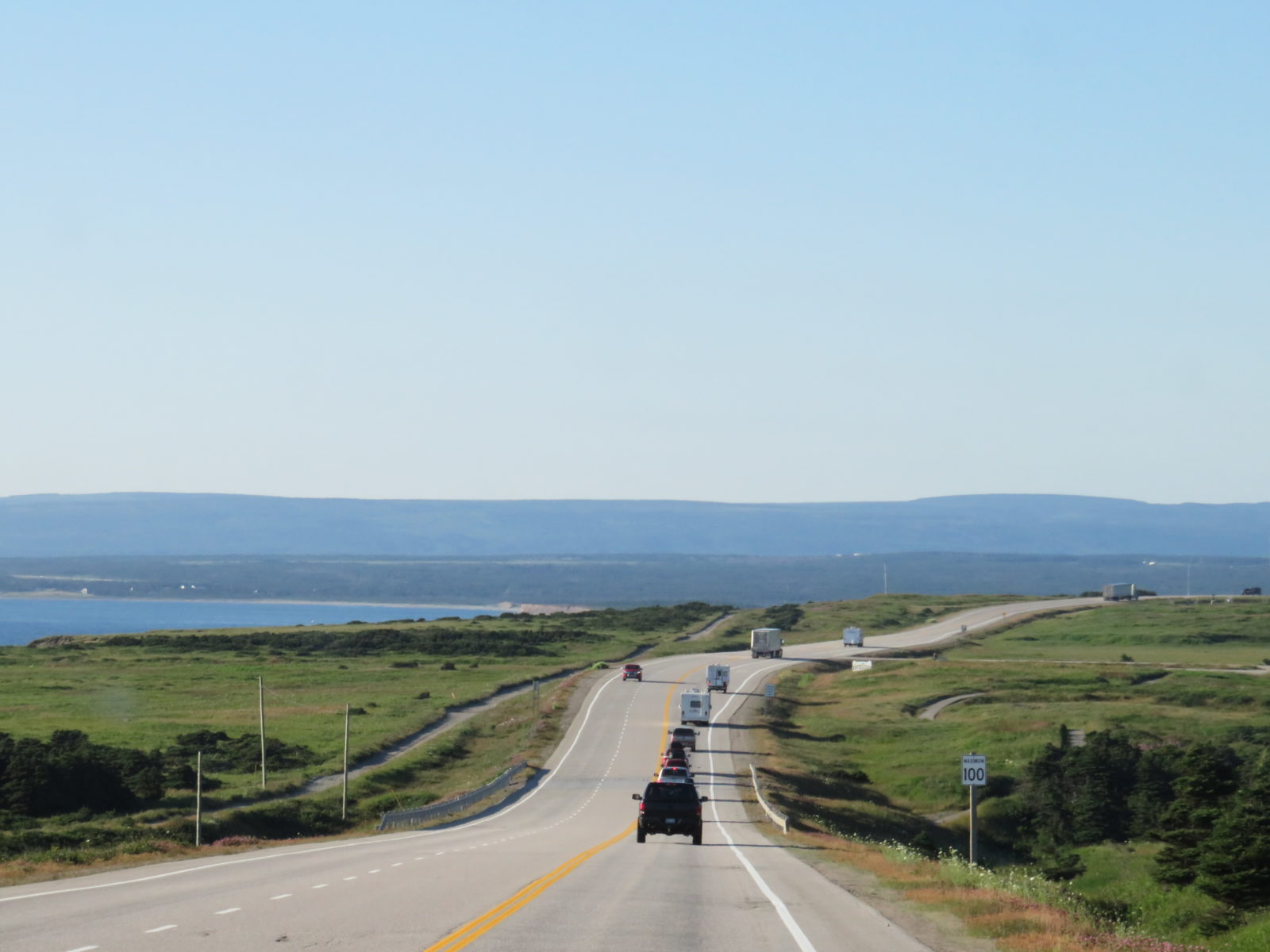
With current COVID-19 restrictions and/or lockdowns, we’re all kinda having to stay where we are, no? And as for us getting there, or anywhere, that’s kinda not happening at the moment. Rather, I’ll morph this expression into hoping that wherever you are, you are safe and healthy as this article reaches you. Grab yourself a cuppa while you read my words, travelling virtually with us as we tell y’all about that time we took our Leisure Travel Vans Unity IB to The Rock.
Wait, where did you go?
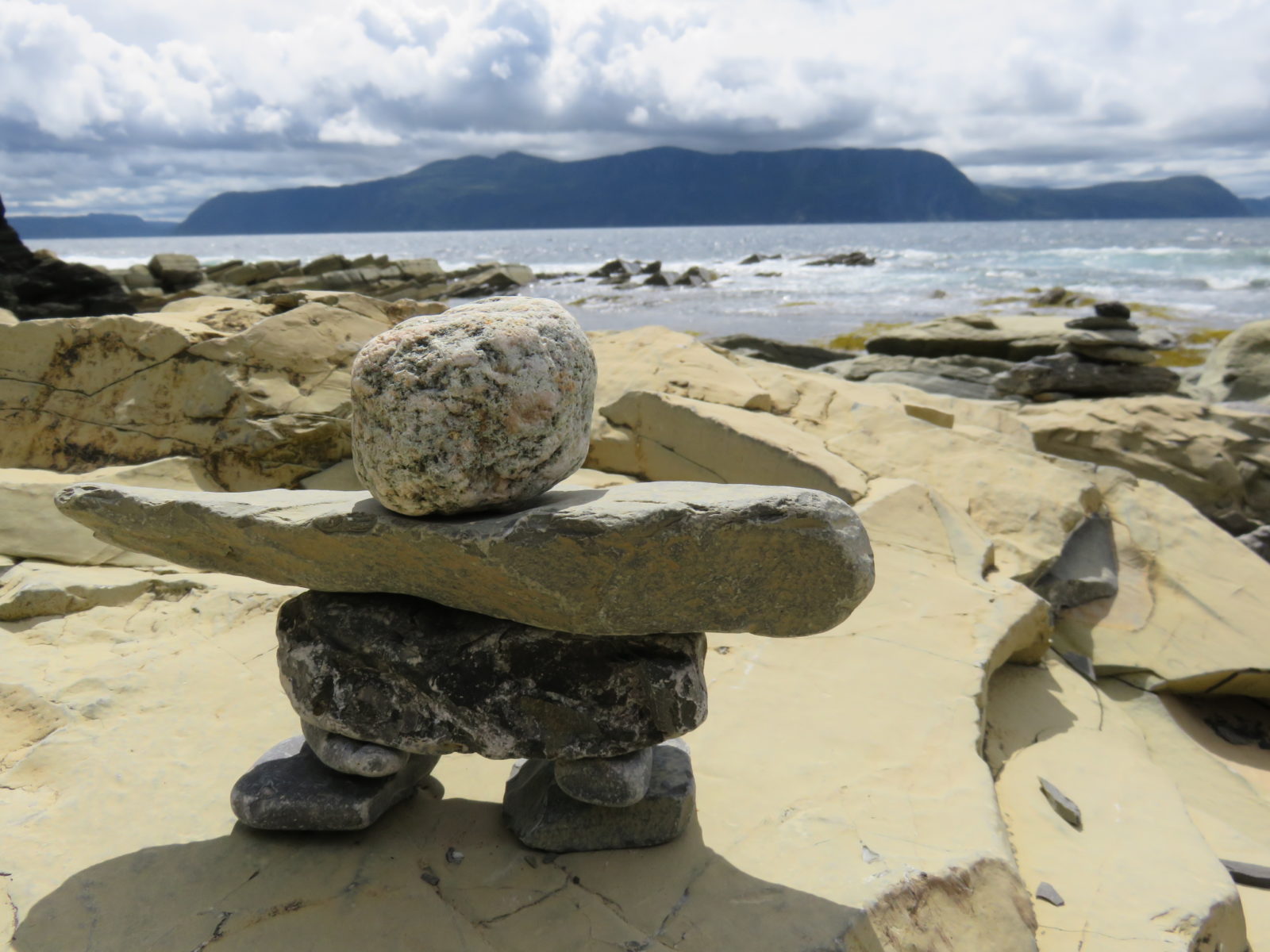
Well, The Rock refers to one of Canada’s ten provinces and three territories; it is an alias for the island that lies on Canada’s most easterly side. In fact, it is Canada’s fourth-largest island (Google confirms the largest three to be Baffin, Victoria, and Ellesmere).
While on The Rock, you might be referred to as a come-from-away, which basically means you’re… well, coming from away. Many others before us came from away, too: Leif Ericsson came from Iceland and called this land “Vinland”, the Portuguese called it “Terra Nova”, the French “Terre Neuve”, and England’s King Henry the 7th named it “New Founde Land”.
For current international and geographical purposes, it’s best known as Newfoundland and Labrador, with Newfoundland being the island part of the province, and Labrador on the mainland. For historical purposes, you might want to know that it became Canada’s 10th province on March 31, 1949, and for planning purposes, you should know that it has its own time zone!
The Dialect
When in Newfoundland, you’ll notice the chatter is different – each region has its own dialect and there’s a twist in the usage of words. The vocabulary consists of an international mix of familiar English words with perhaps not-so-familiar French words alongside, thrown in with some Irish and definitely some ancestral Beothuk inflections. But no matter their origin, all will be spoken with the thickest of accents, m’ luv, and I can almost guarantee that you won’t understand a word, me son. Just when you think you’re getting the hang of the lingo, someone else says something, and g’wan b’y, it becomes a head-scratching moment all over again.
Our second day there, as we were stopped for breakfast at a little coffeeshop, our kind waitress asked us,
“’Ow’s she cuttin’, me cocky?”
I think it took three tries and two coffees before we got the words down right, along with their meaning: “How are you, my friend?”
She said the same to someone else sitting near us who, as a local, knew exactly what she’d said when he easily answered her with, “Best kind b’y” (“I’m doing well”), followed by, “I‘ll drop over ’round, by and by” when he left (“I’ll visit again”).
You might get asked, “Where y’longs to?” which means, “Where you from?” Or more precisely, it means, “Where do you belong?” I love this expression. If you’ve been following our travels, you may not know that Dave and I actually belong to Nova Scotia. But being adventurers, we don’t feel like we “belong” anywhere, or rather, we always feel we belong exactly where we happen to be at the moment.
The Landscapes
So here we are nearing the island of Newfoundland, which is indeed a giant piece of rock looming out of the ocean.
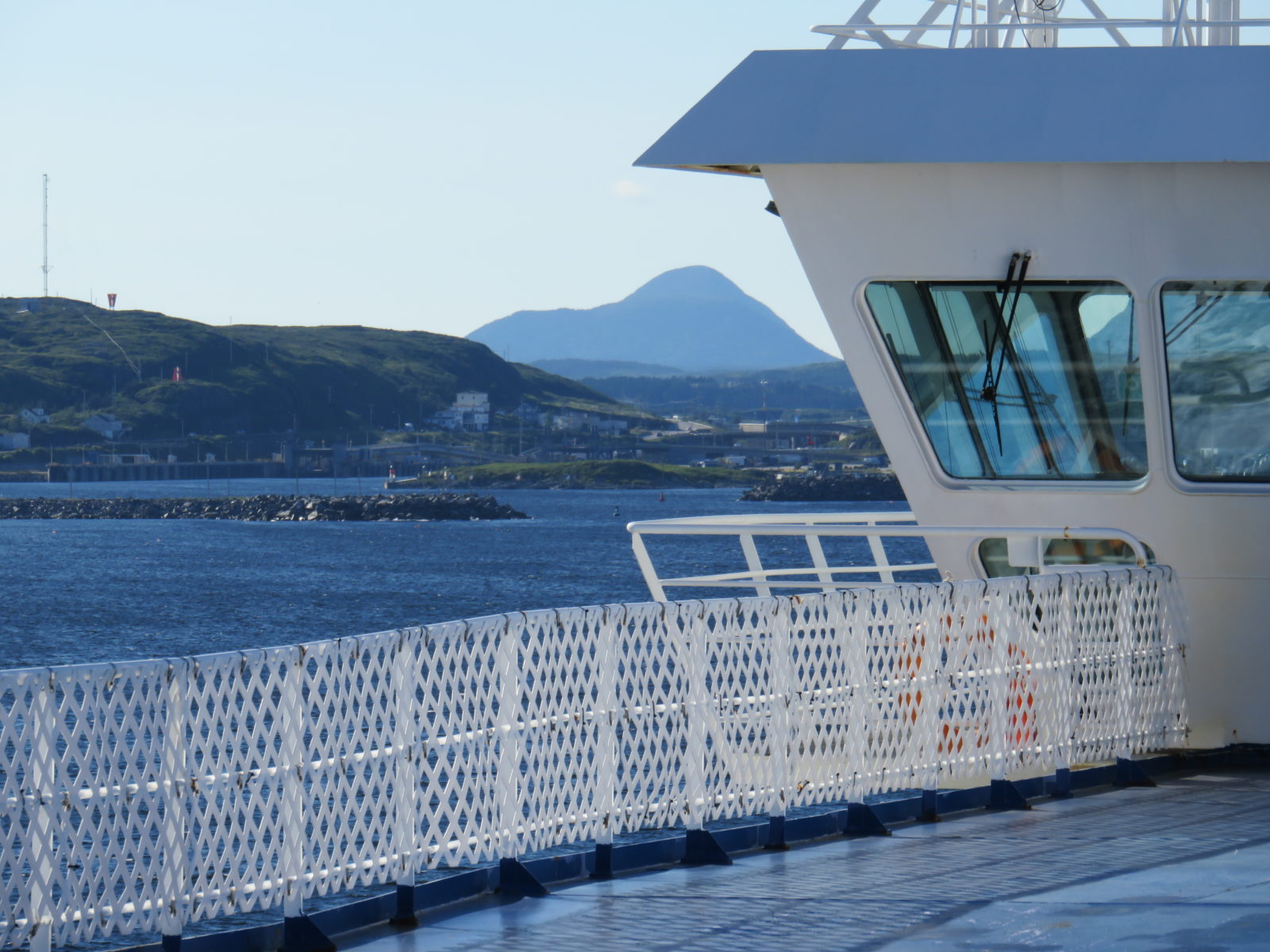
It’s a land of not only mountains and rivers, but meadows and valleys and roads that disappear in the gorgeous expanse of a horizon ahead of you, with cold Atlantic waters lapping the rocky shores on a coastline that is both majestic and rugged.
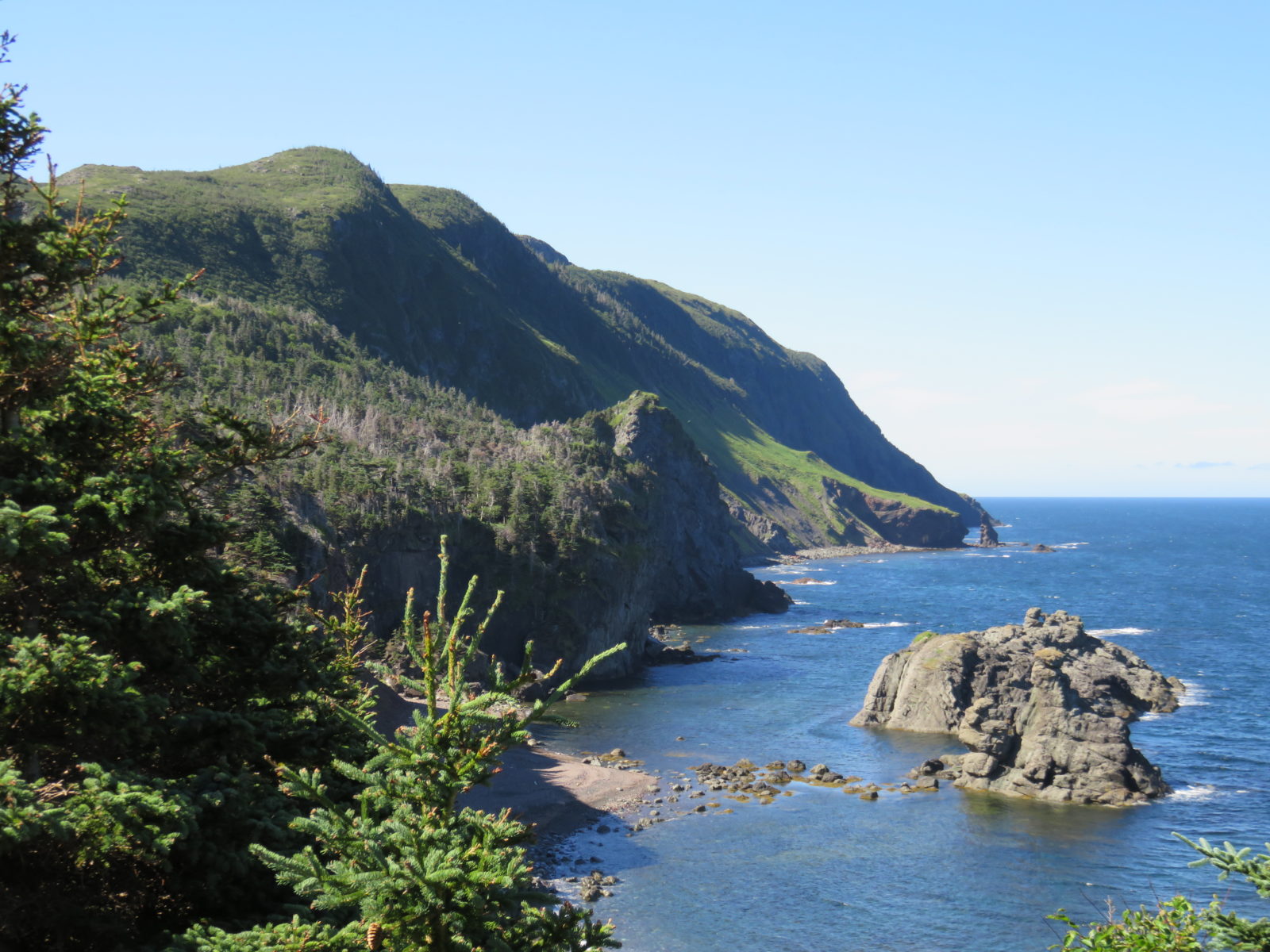
There are fjords and, at the right time of year, icebergs. And there’s fog!
Like that time we chose to boondock in a lovely spot overlooking the shores and waters, hoping we’d see icebergs drifting by, the white and red lighthouse standing tall and proud just feet away from us.
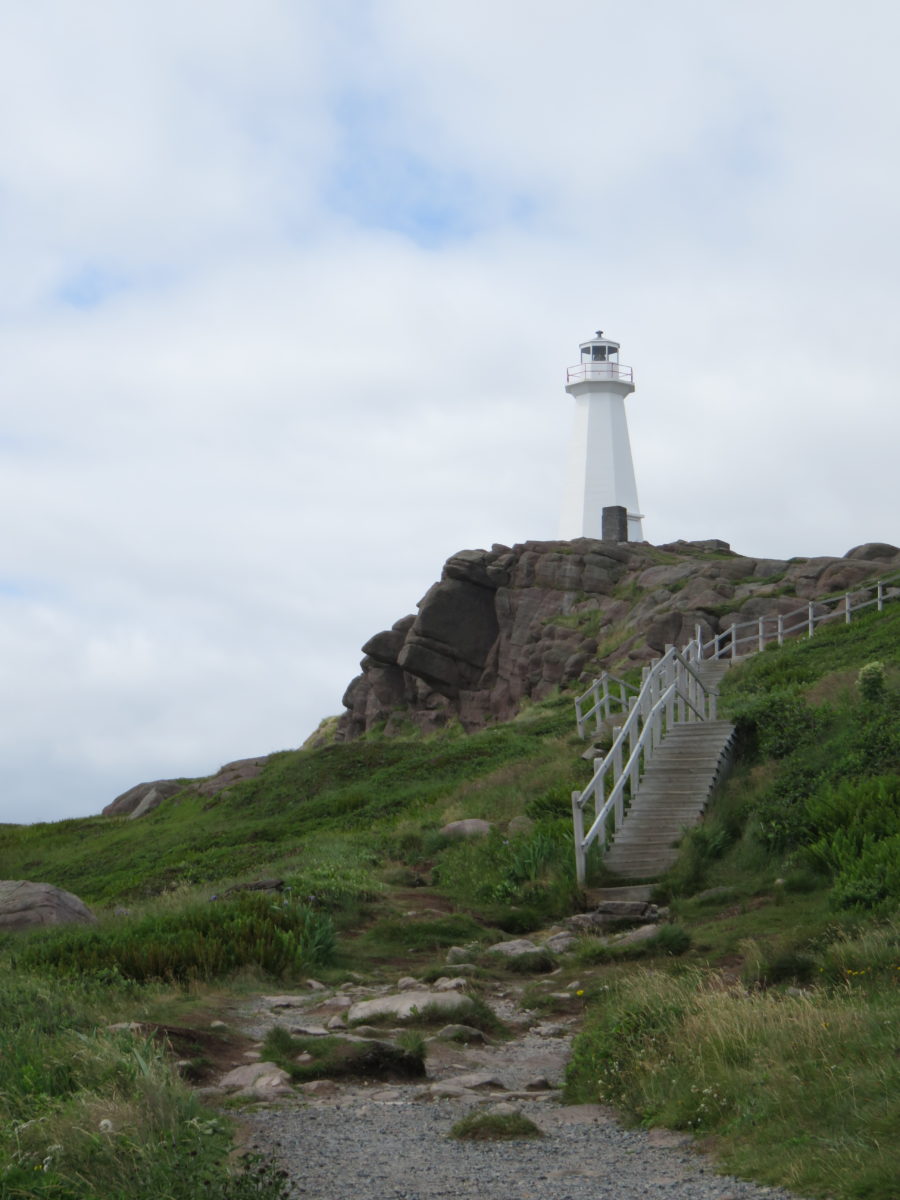
We enjoyed our dinner, the skies turning magnificent colours with the setting sun. And when the fog rolled in, quietly obscuring everything with its misty wisps, our peace and quiet was instantly disrupted by the insanely loud bleat of the foghorn located in the lighthouse right beside us. In evenly spaced intervals it blasted its piercing noise, and we were forced to pack up our stuff and drive away to look for another spot where we could spend a quiet and restful night.
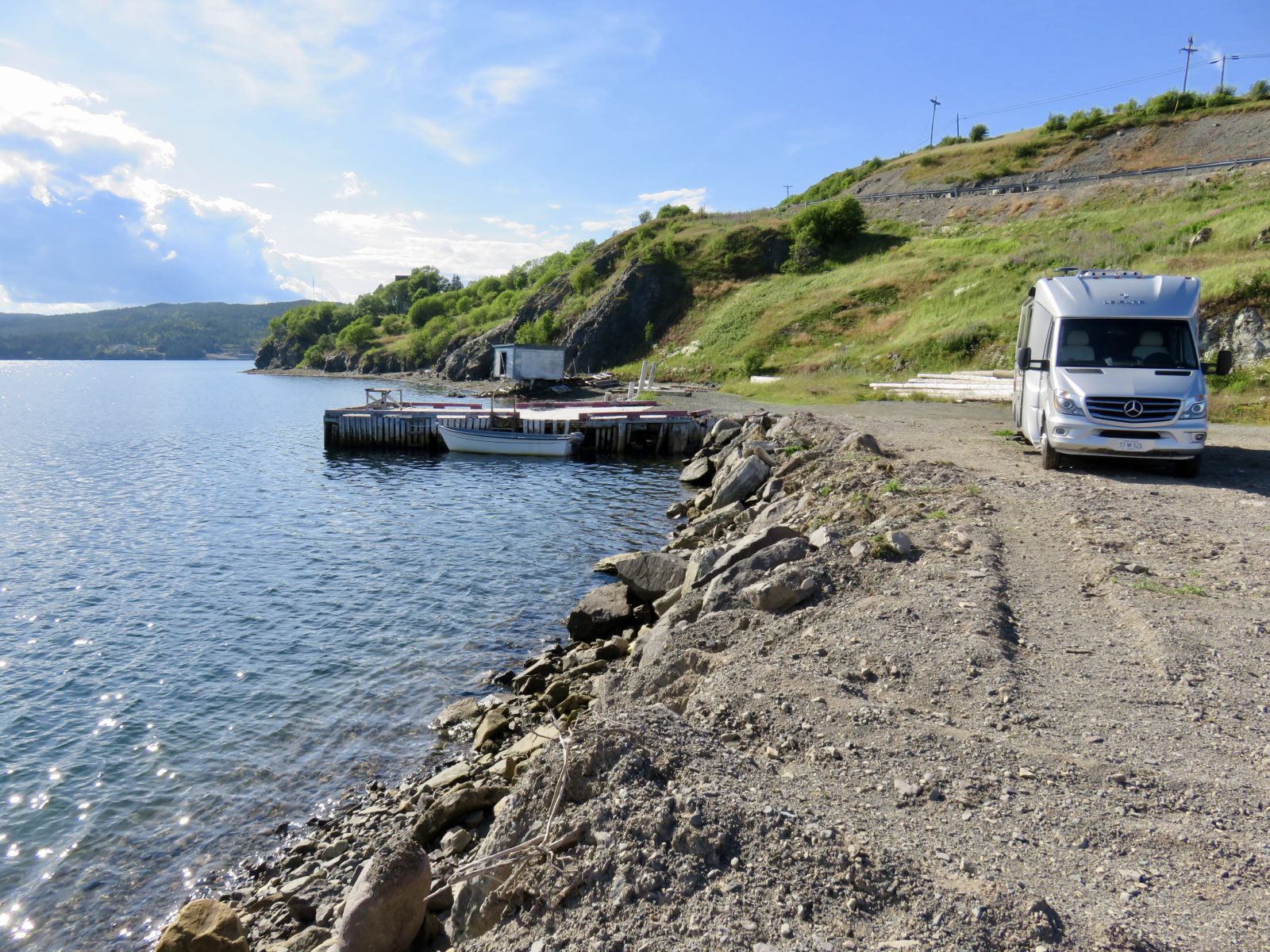
The Trip Over
Since Newfoundland is an island, you have to make reservations with the Marine Atlantic Ferry to get there, but there are two destination options to choose from when departing North Sydney. You can head for Port aux Basques, located on the western part of the island, using the 7-hour day or night routes. Or, you can choose to go to Argentia on the eastern part of Newfoundland, arriving approximately 16 hours later. You can arrive to one port and leave from the other.
Our seven-hour day-crossing had us leaving Sydney, arriving in Port aux Basques, and then driving the 900-plus kms of Route 1, also known as the Trans Canada Highway, to the capital of St. John’s (with an apostrophe, please!) post haste. Then, we would meander through the towns, villages, mountainous roads, and incredible landscapes, eventually returning to our starting point of Port aux Basques where we had reservations to take the ferry home. We had given ourselves three weeks to do so. Believe me when I tell you that we could easily have used three more.
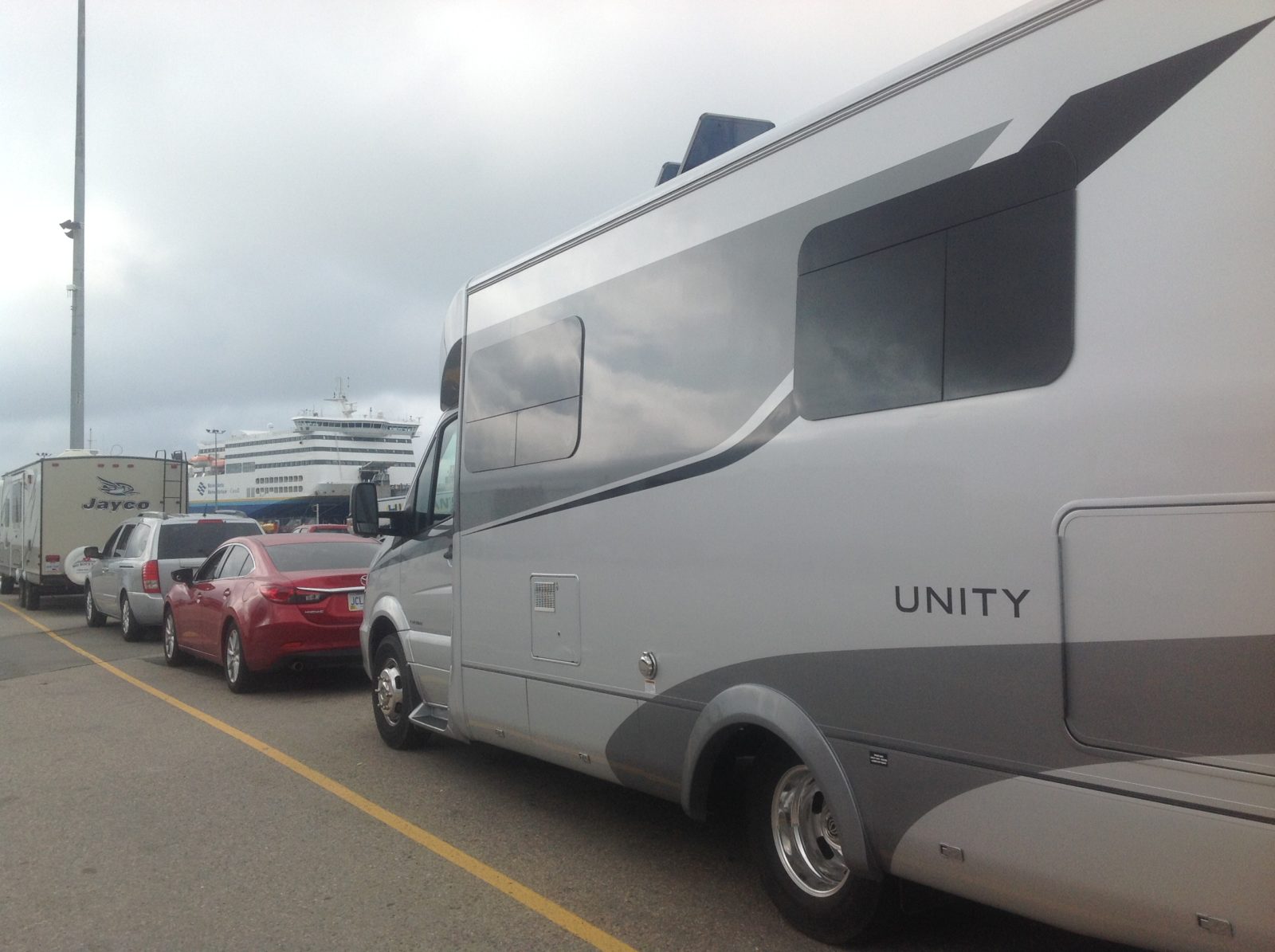
There are two things to note with regards to the ferry crossing. The first is to be aware of your weather window. It’s a long day on the water if the seas are rough, and although reservations are usually made months ahead of time, there are no change fees if you change your reservation within the allotted time frame allowed, should you see a forecast of the weather turning bad. Secondly, when you leave the island, you may be asked if you have any plants or vegetables, potatoes in particular – know that they will all be confiscated. Being an RV, we were sent to the car wash area, where the undercarriage and wheels were sprayed with high-pressure hoses before we were allowed to board.
We spent our time on the ferry like excited teenagers, walking around, playing cards, having a bite, and watching the seas around us, looking for, and spotting, whale spouts. We were lucky enough to be one of the first ones off the ferry in Port aux Basques, and as much as we wanted to stop and explore this town, especially after being cooped up on the ferry for 7 hours, we did have a plan and a goal. Make it across the island, post haste! So we took advantage of the few remaining hours before dark and drove straight to Corner Brook where we knew we could overnight at the Walmart (free boondocking), and where the Canadian Tire right next to it has a free dump (how convenient!).
The Towns and More
Port aux Basques and Corner Brook are names of just two of the many quaint places we travelled through. Some of the others that caused us to raise our eyebrows? Quidi Vidi on the harbour, known as The Gut.
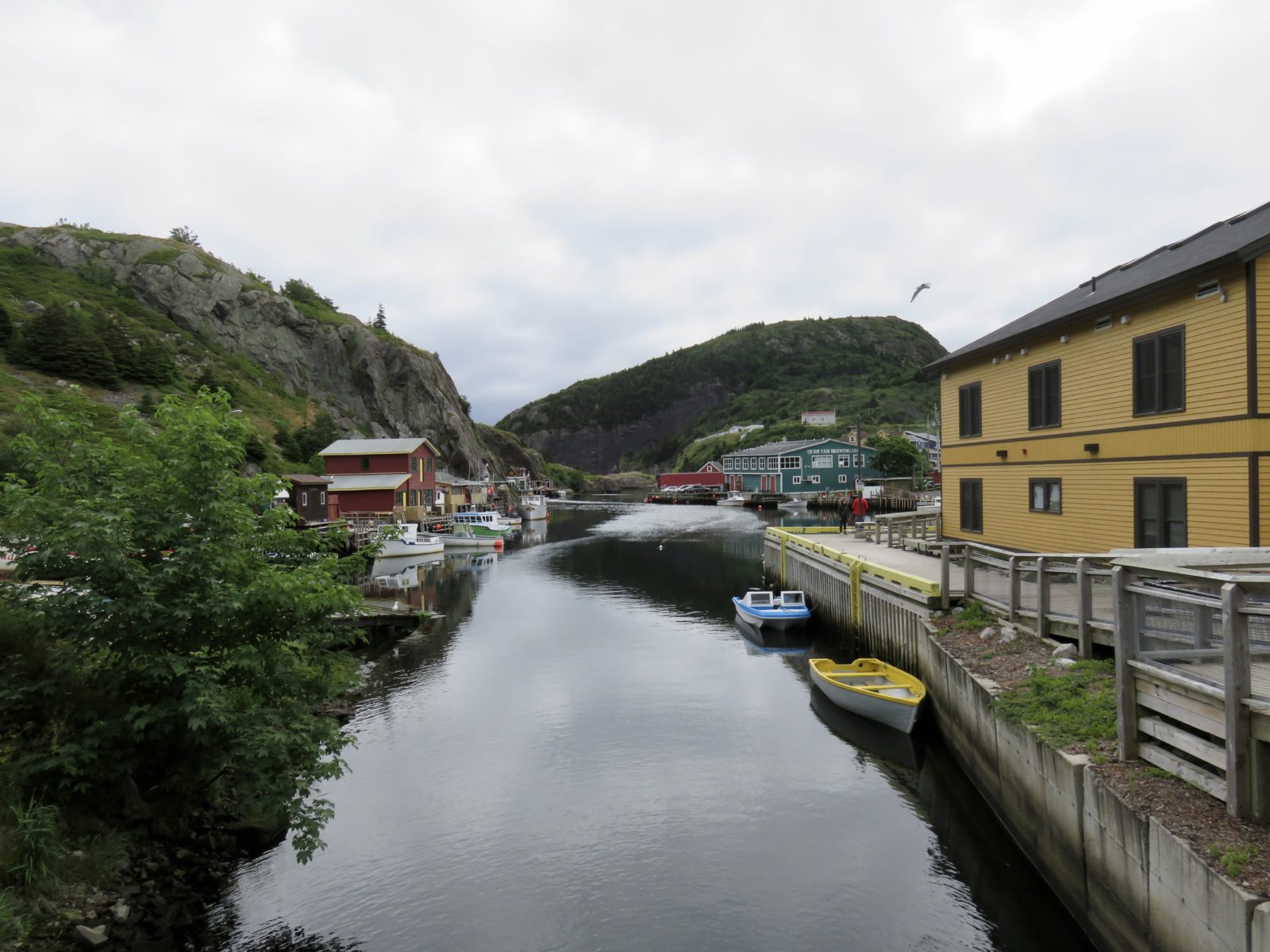
L’Anse aux Meadows, where the vikings settled, was incredible. Isle aux Morts, which translates to Island of the Dead, and Fogo Island, are two places we didn’t visit because that required another ferry crossing that we didn’t schedule, and we ran out of time, both in the day and in our three weeks! We smiled as we drove through Hearts Content, Hearts Delight, and Hearts Desire, and blushed as we rolled through Blow Me Down, Come by Chance, and Conception Bay. For added measure, there’s even a place called Dildo, which, c’mon now, is named after the dildoe, a rowboat part also known as a thole pin! What were you thinking?
Sure enough, two days later we made it across the island, driving into St. John’s where we had reservations in Pippy Park. We had timed our arrival to explore the Royal St. John’s Regatta festivities, scheduled for the first Wednesday of August. Regatta day is always a civic holiday, however the quirky twist is that it’s only deemed a day off pending the weather that morning. Be wary of the Regatta Roulette; in other words, don’t party too hearty the night before ‘cause if the weather don’t cooperate, you might have to go to work.
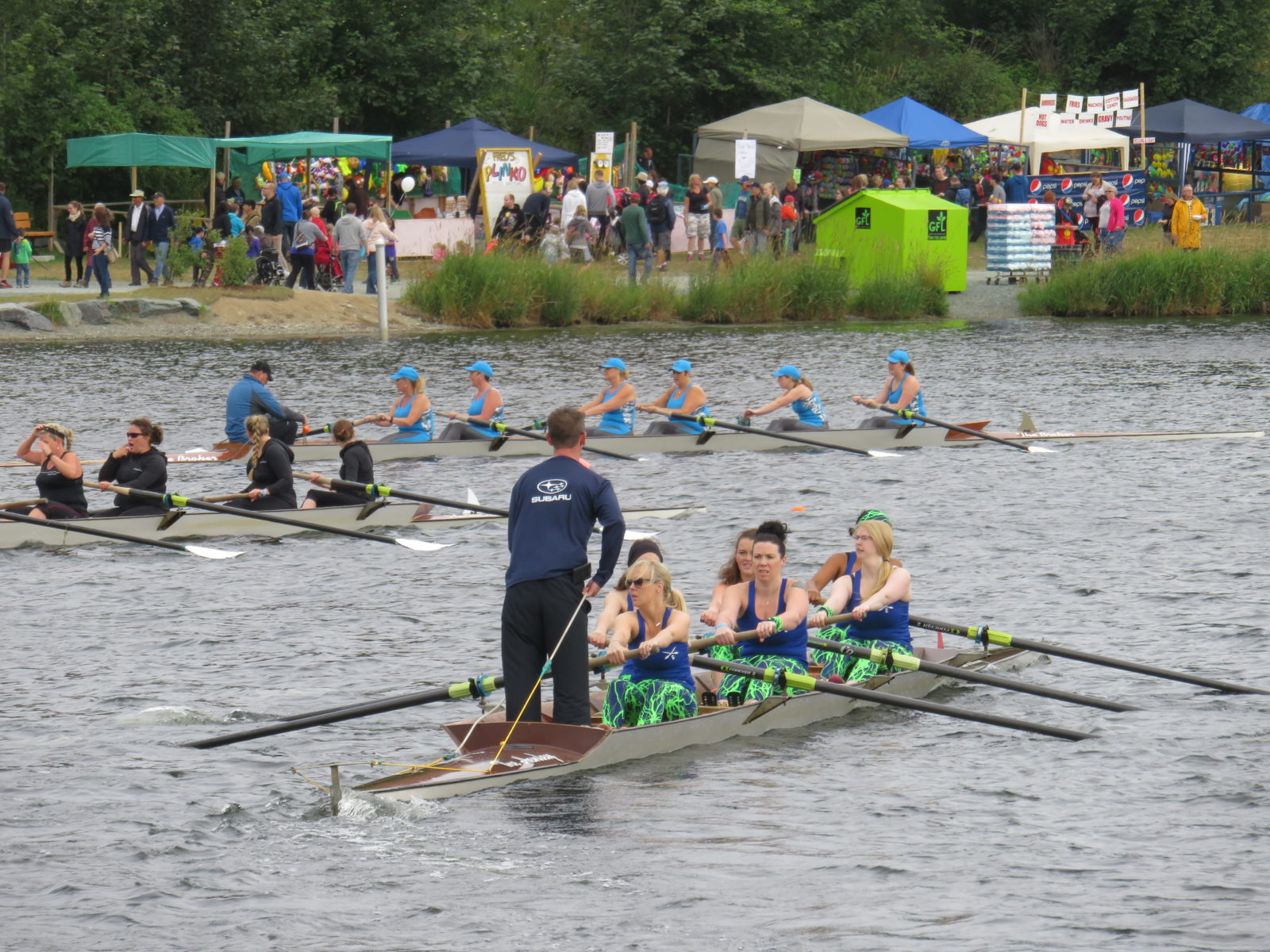
Speaking of parties, there are more pubs downtown St. John’s (per square foot) than anywhere else in Canada. You just can’t come to Newfoundland and not get screeched in! The bartender will read you the what’s what of the ceremony, and to seal the deal you’ll have to kiss the lips of a cod (fresh or frozen), and if one is not available, how about kissing a puffin’s arse (not a real one, a plush replica!)? C’mon now!
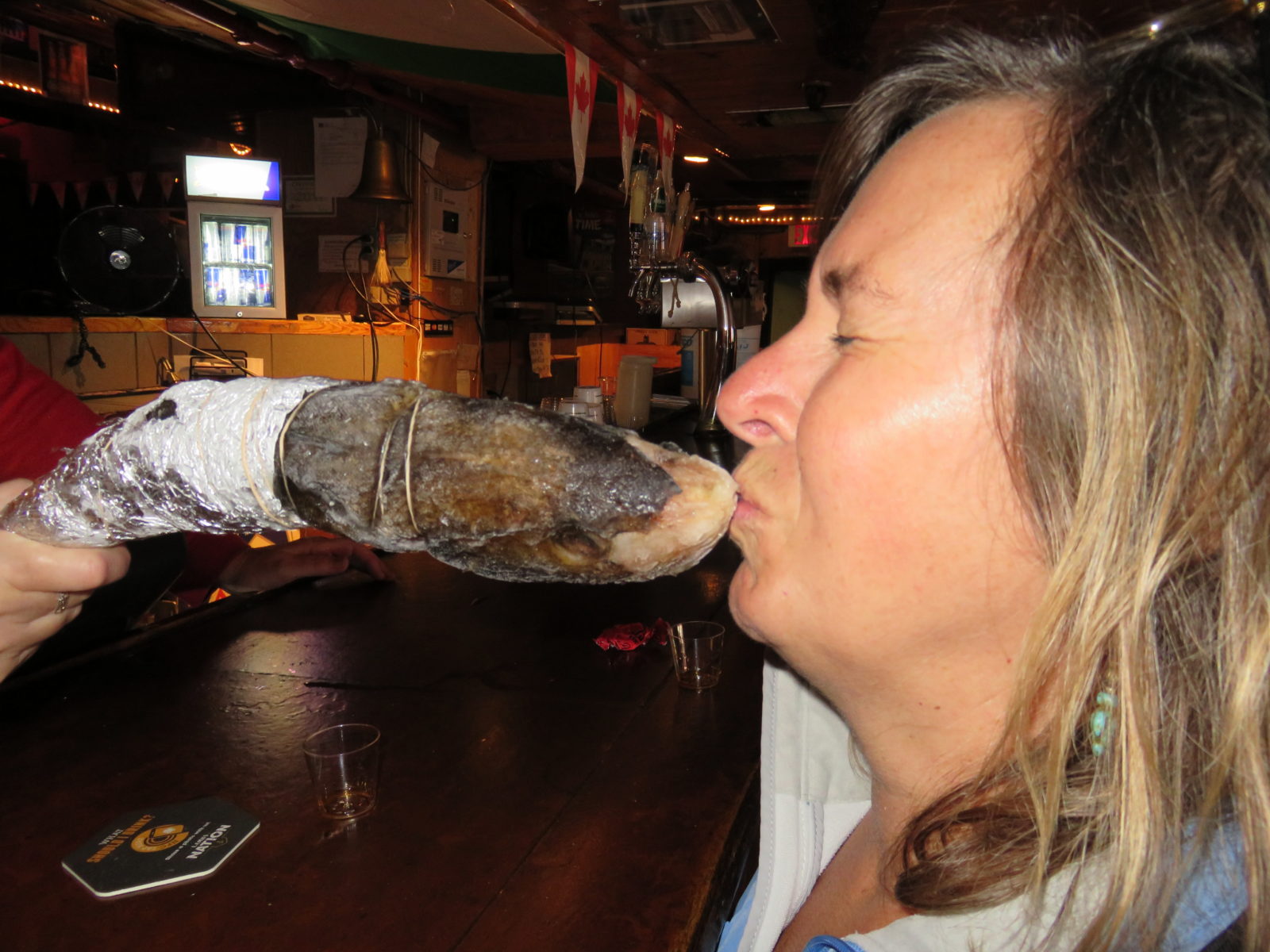
You’ll down a shot of Screech, which is Newfoundland rum that’s strong and packs a punch, sort of like moonshine. You might ask for more when you get your certificate. It’ll be great times, promise, and it’s worth it all to become an honorary Newfoundland’er, b’y.
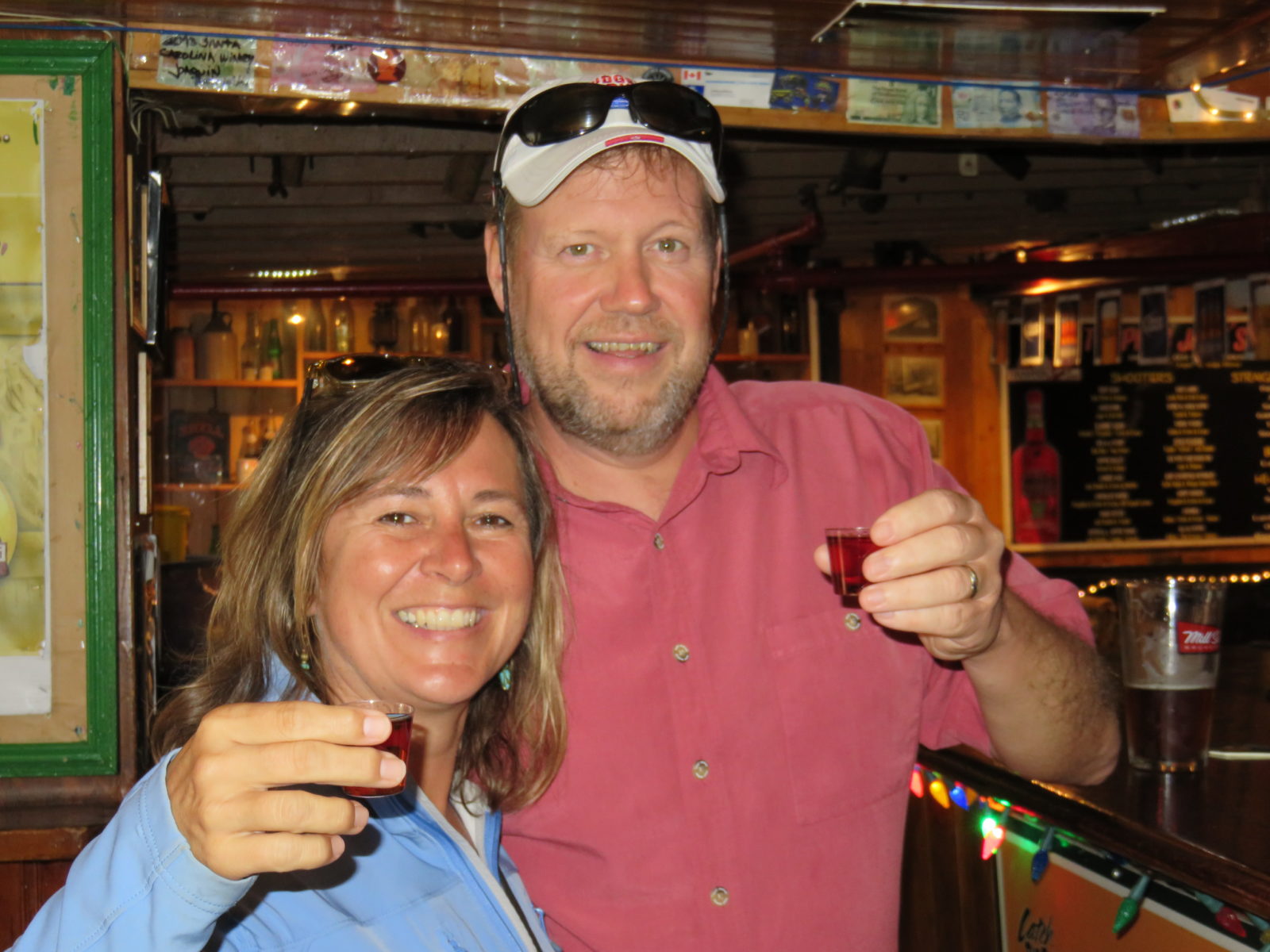
Take some time walking around this beautiful coastal town and make sure you visit Jellybean Row, where each house has its own vibrant colour. Why? Locals explain that fishermen, returning from rounds and after weeks at sea, could look up and easily locate their own colourful home nestled in the hills.
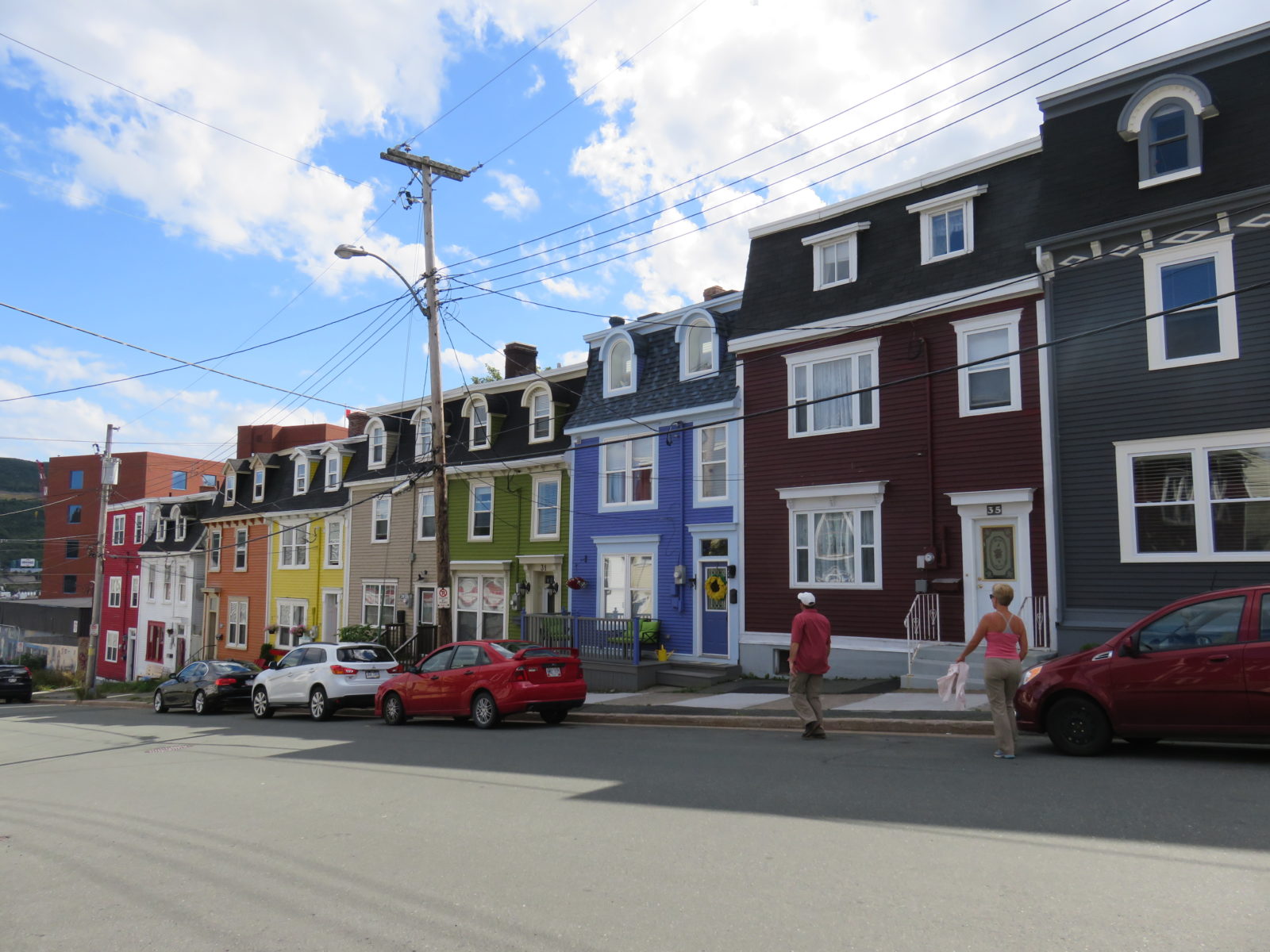
Get up to Signal Hill and watch the ships come in to harbor.
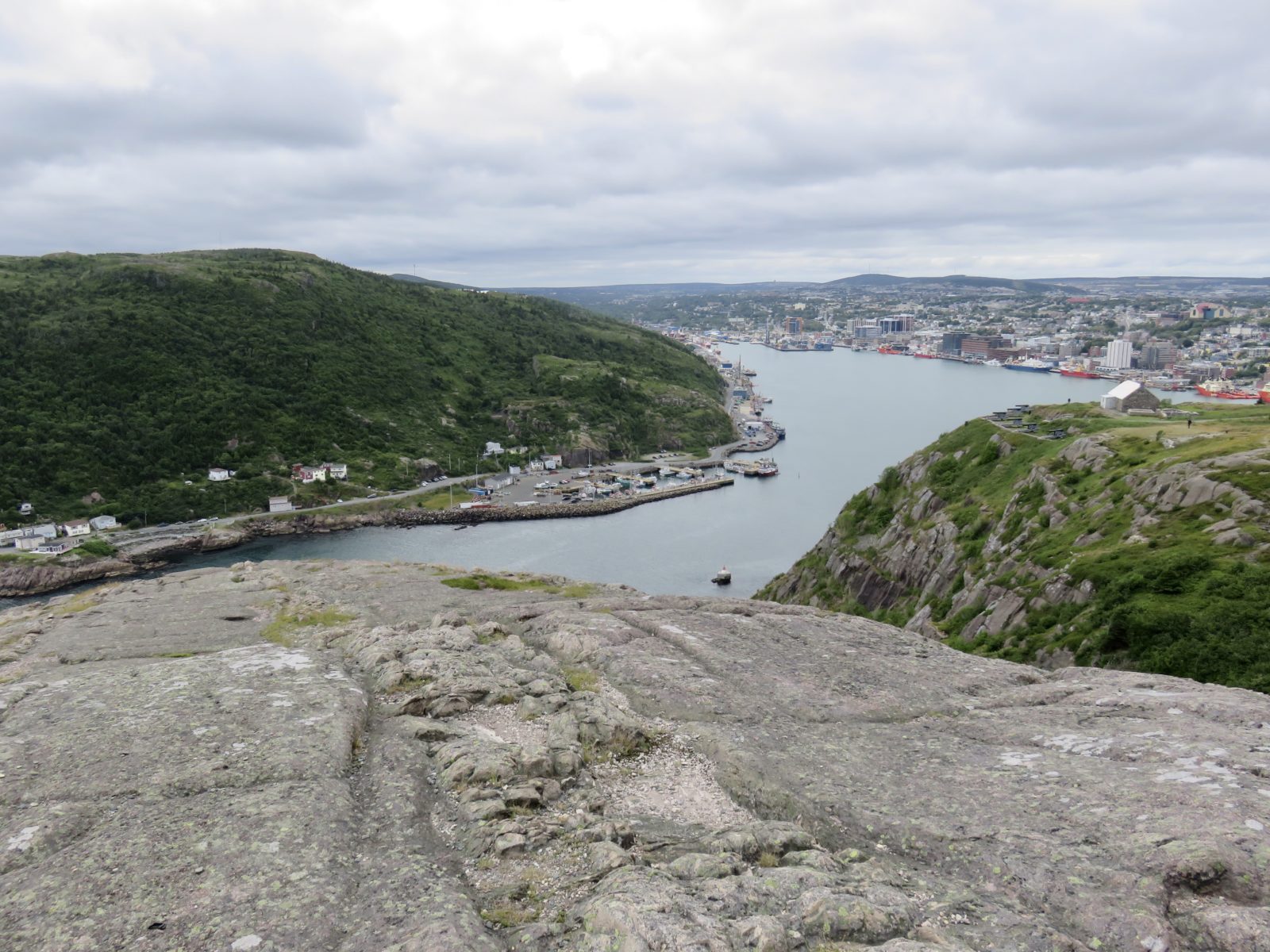
The Local Food and Drinks
There’s lots to see and do here, but after all that walking, you might just say, “I’m gutfounded, fire up a scoff,” which means, “I’m hungry, make me some food!”
What does fresh, salty sea air make you hungry for? Why some fish and chips, of course!
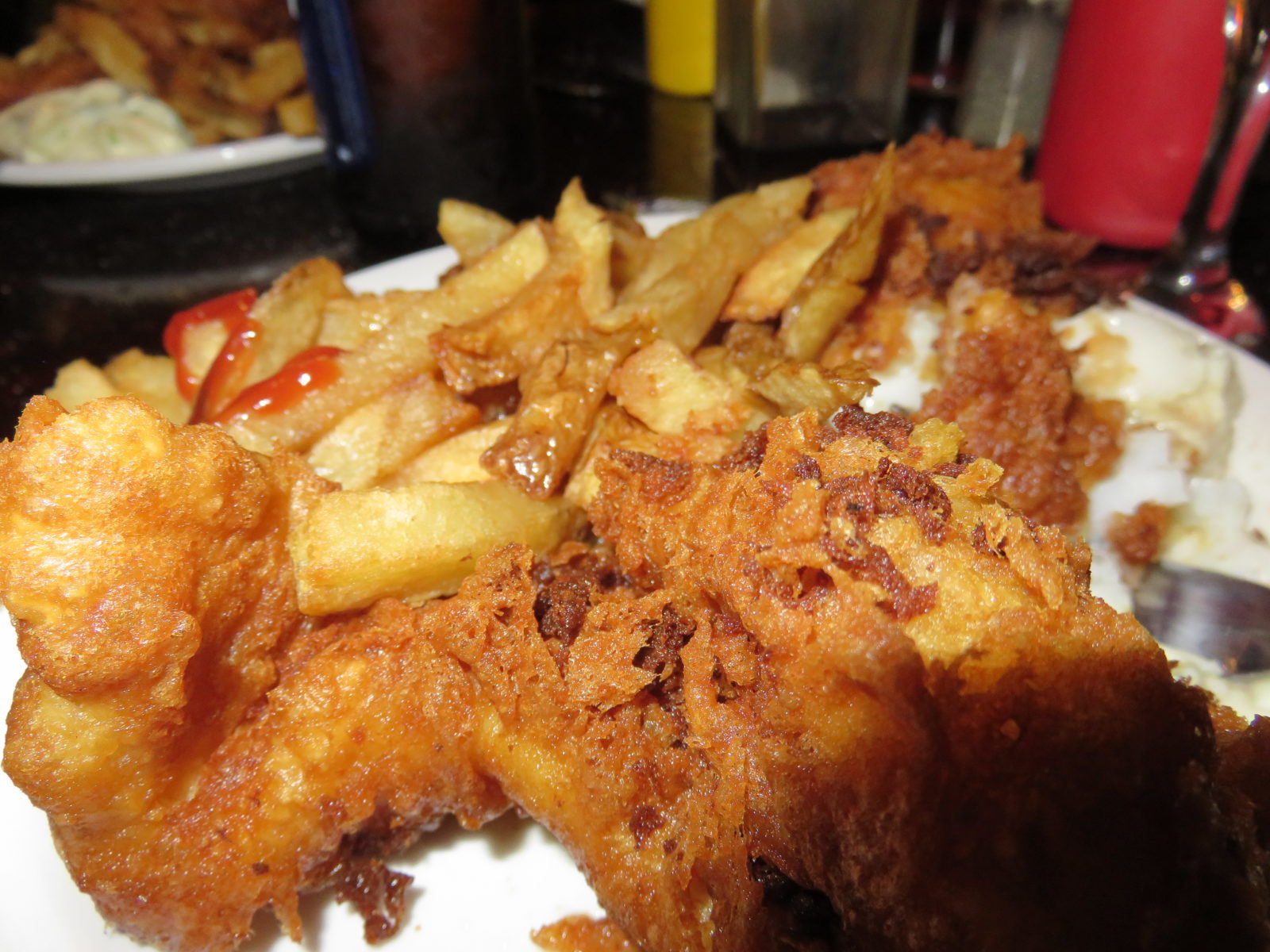
We were told to go Ches’s, where the lineup stretched out the door and around the block. Our stomachs grumbled in response and we thought it was too long to bear, so we went to the next best place: Duke of Duckworth. We got in immediately but quickly found out, as we entered the downstairs waiting area, that we had just as long a wait. Except that here we were sheltered inside!
We enjoyed beers while waiting, talked to everyone around us, and hungrily inhaled the fried aromas while eyeing the plates full of crispy fish and chips, some with dressing (aka stuffing) and gravy, being delivered all around us. We can still taste the deliciousness to this day. (Yes, I did say fries with dressing and gravy.)
Speaking of scoff, Newfoundland has quite a varied menu to peruse. There’s flipper pie, somewhat like chicken pot pie except it’s made with seal flippers, not chicken. Why not try some cod tongues? There’s fried bread dough called toutons, baked turr (a local type of bird), and every church in every town advertises Jig’s Dinner on Sunday nights, a corned beef type of boiled dinner served with figgy duff, a dessert made with raisins. We ate ourselves silly on homemade partridgeberry (aka lingonberry, a relative of the cranberry) jams and pies.
After all that food, you might require something to wash it all down with. While in Quidi Vidi, go to the Quidi Vidi brewery for a locally brewed beer, and if you get the “Iceberg” in the signature blue bottle, it is brewed with local iceberg water.
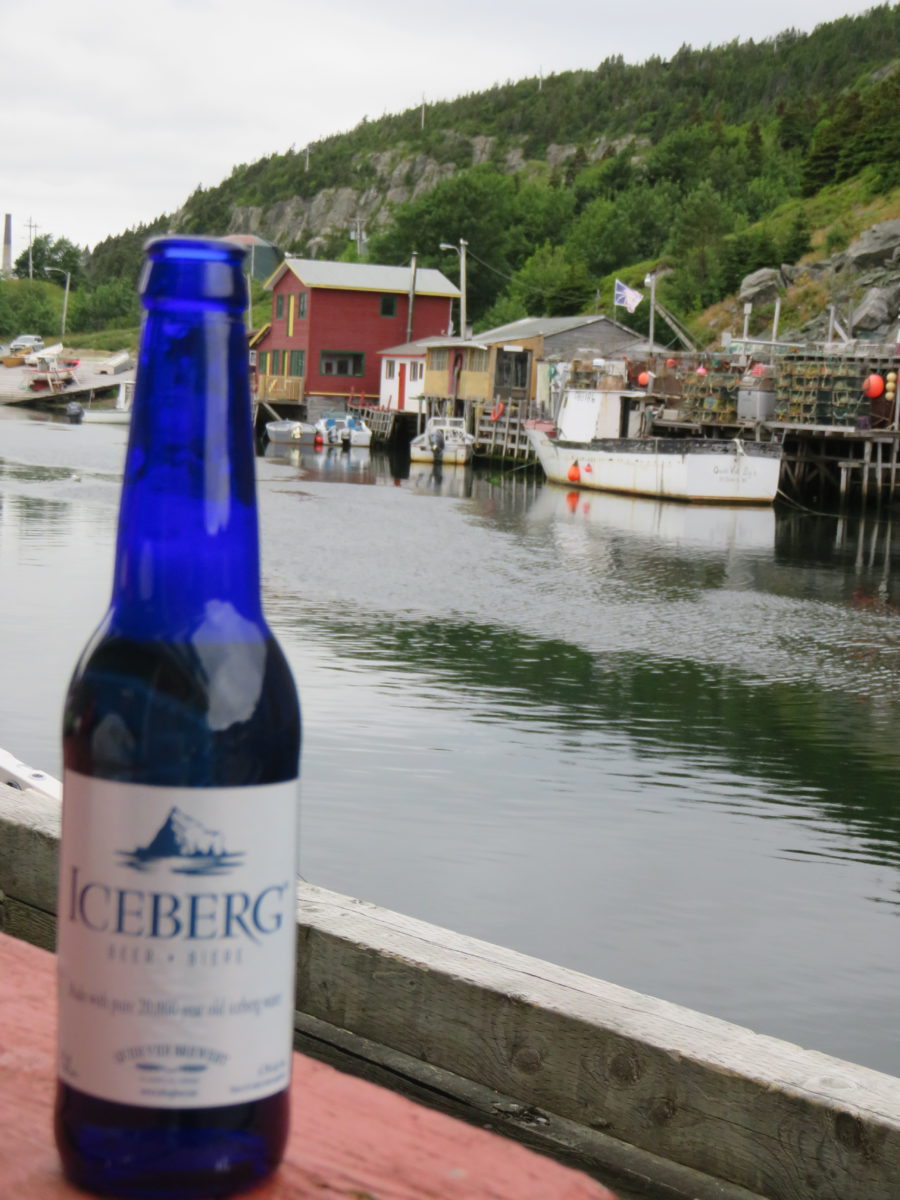
While in town we toured the Newman Wine Vaults, enjoying a taste of their port while hearing about how it all came to be.
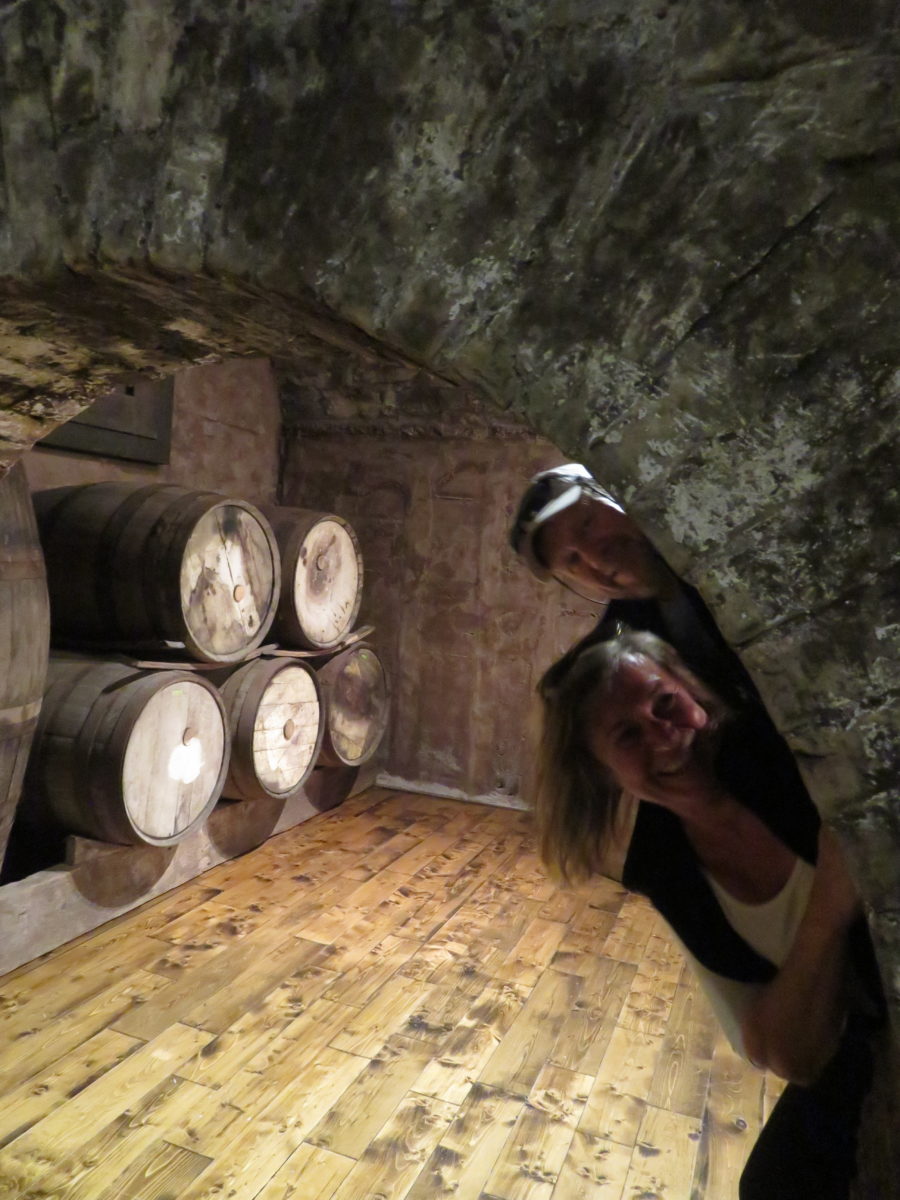
The tale goes that in 1679, a Portuguese ship loaded with sweet wine slipped its moorings, floated to sea, weathered a few severe Atlantic storms, and limped into St. John’s where it got frozen in the ice for the winter. When it finally returned to England the following spring, the wine had aged, and from that point forward, Newman and Company decided to age its port wine in Newfoundland. To this day, it remains one of our favourites.
When you’re in Twillingate, stop at the Auk Island Winery. Founded in 1997, it uses iceberg water along with wild, truly organic, handpicked Newfoundland fruits and berries. Even if you’re not a wine drinker, it is worth a stop here anyways, if nothing but to read the many original and unique wine labels: “3 Sheets to the Wind”, “Fifty Shades of Bay”, “Jellybean Row”, “Krooked Cod”, “Moose Joose”, and “Mummers Wine”. They make for some truly unique gifts along with your very own story to tell.
Speaking of an auk, that turns out to be a short-winged, black-headed, black-and-white-bellied, diving seabird found in northern oceans – maybe a relative to the penguin? We never saw one, but we did go in search of puffins, and spent hours laying on our stomachs draining our camera batteries, trying to zoom into the best shot.
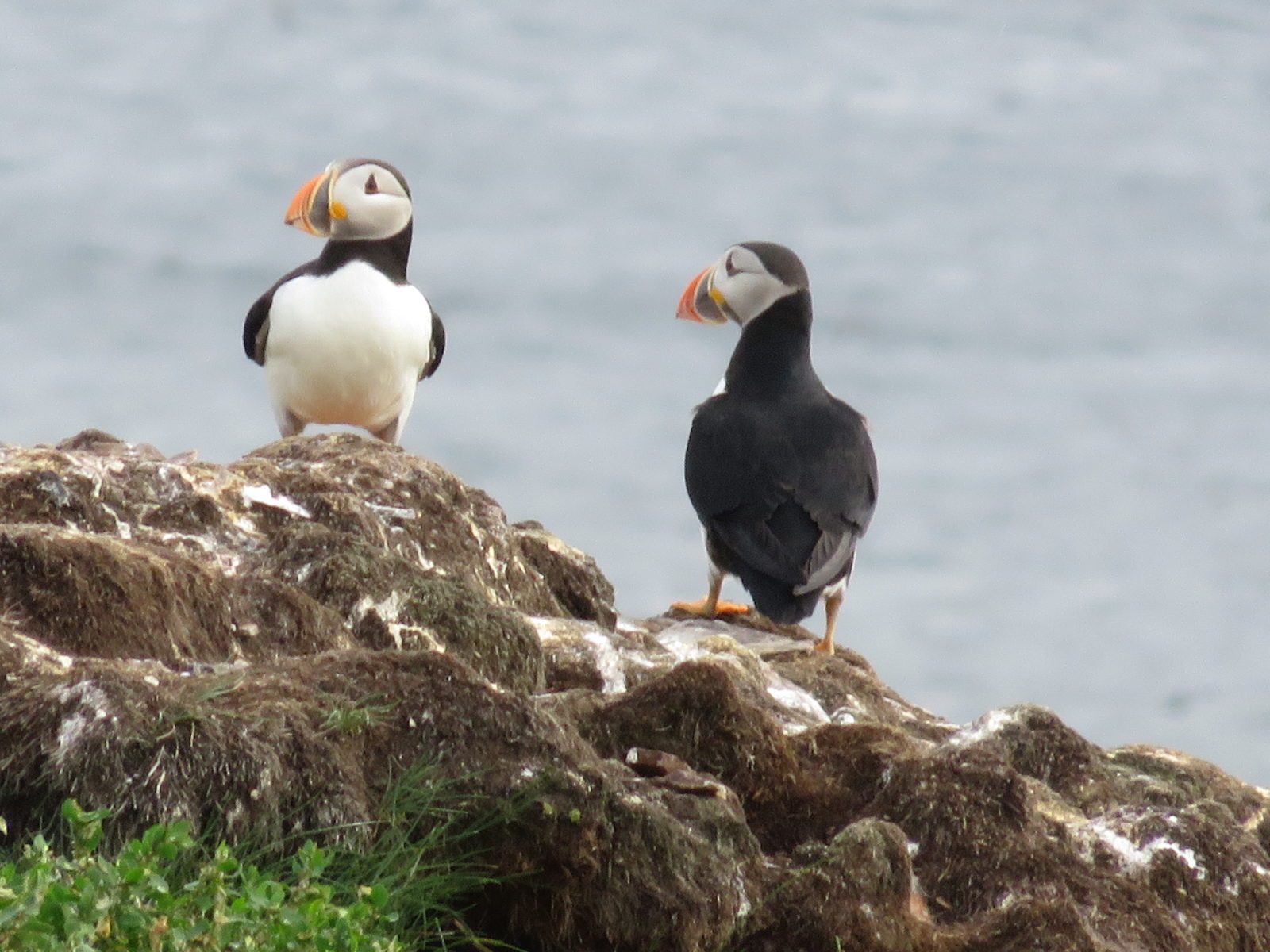
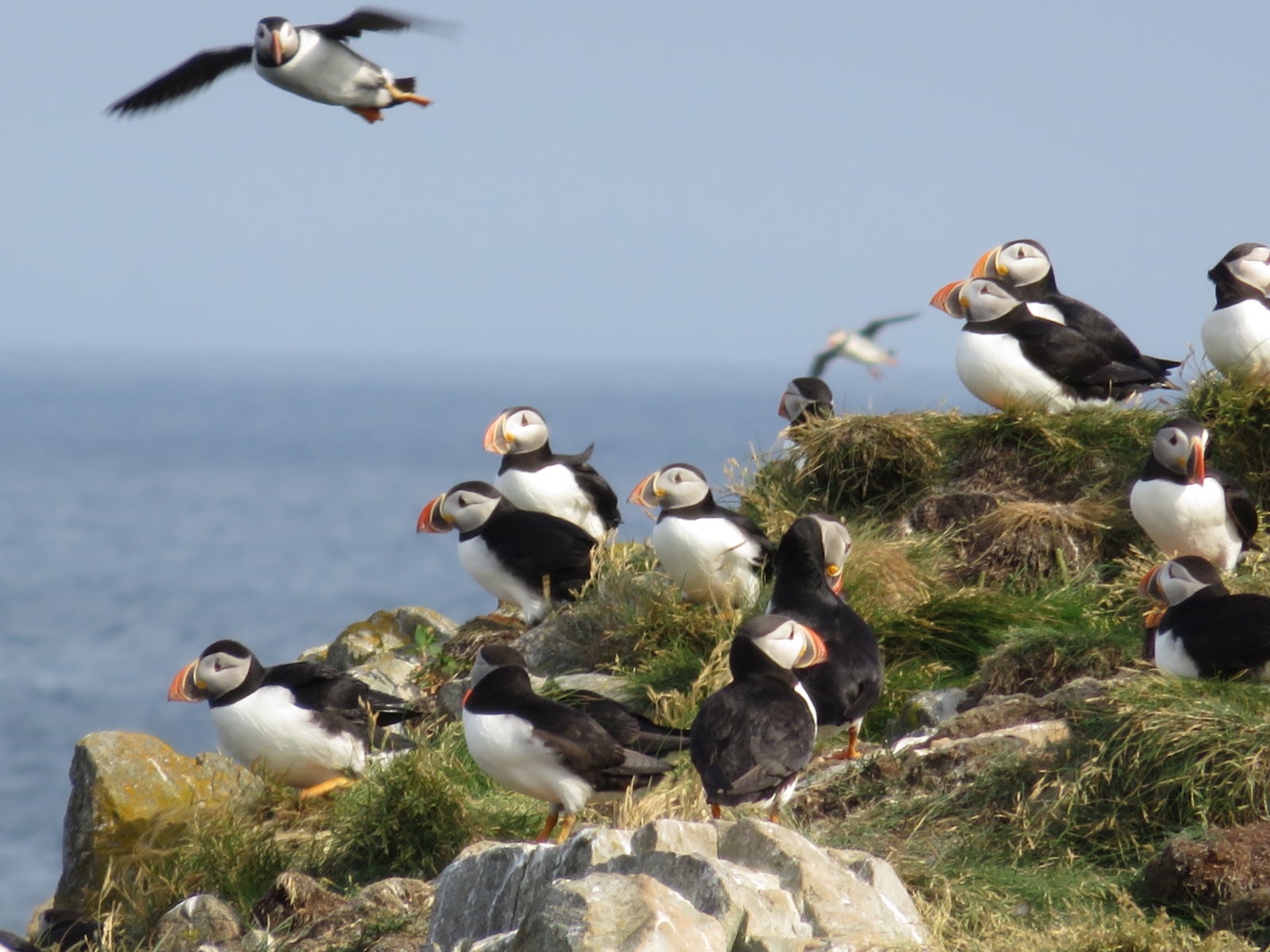
Make sure you stop at the many local fishing shacks along your route and get something freshly caught, then head to the nearby store and get some homemade breads and treats that are, bar none (pun intended), out-of-this-world.
The Hiking
Now that you’ve eaten yourself silly, you really need to go for a hike, and there are many to be found, no matter where you are.
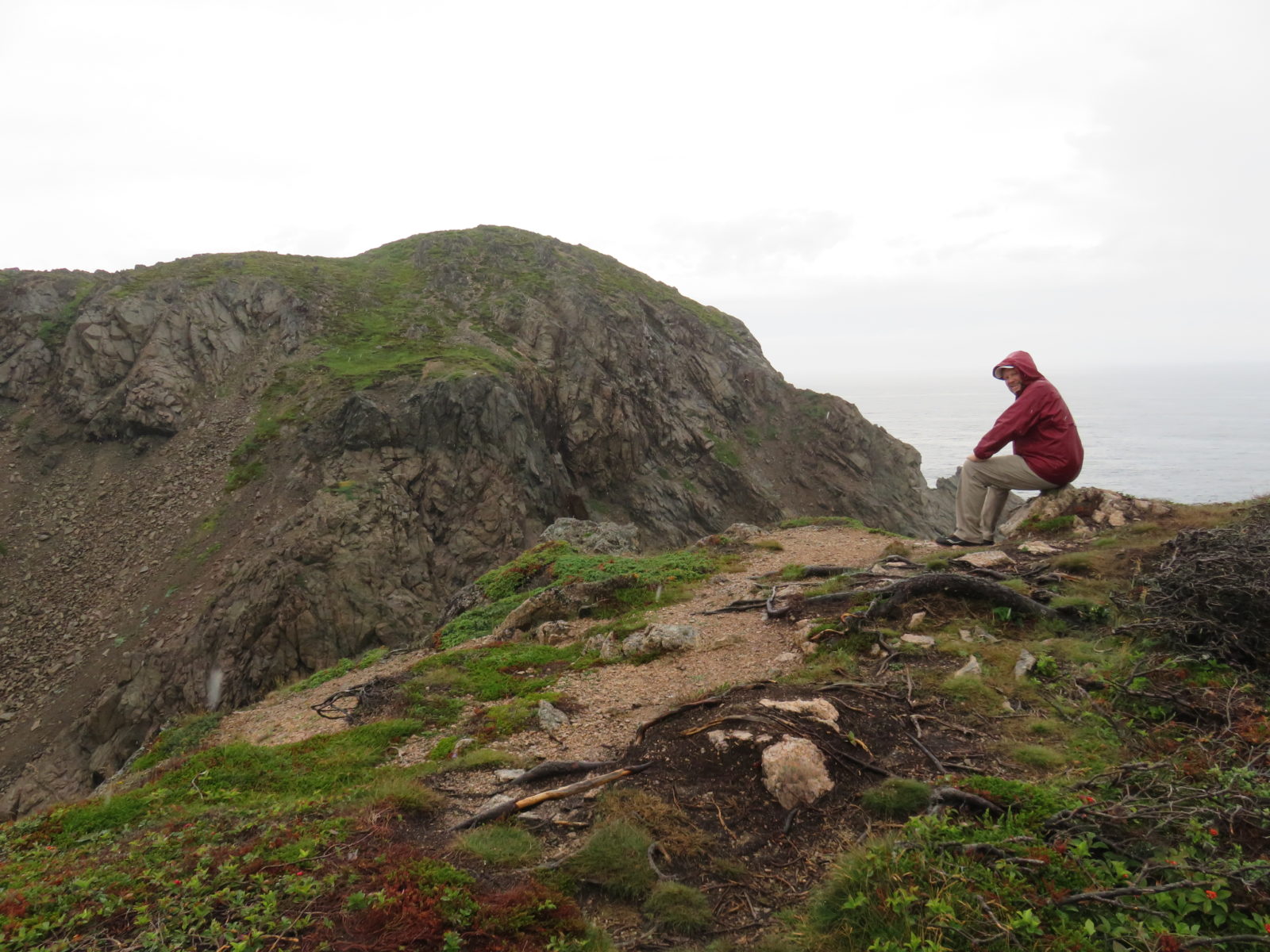
On one such trail, in the middle of a larger meadow-like area, we came across a large fenced-in area with a wild forest growing inside. Curious.
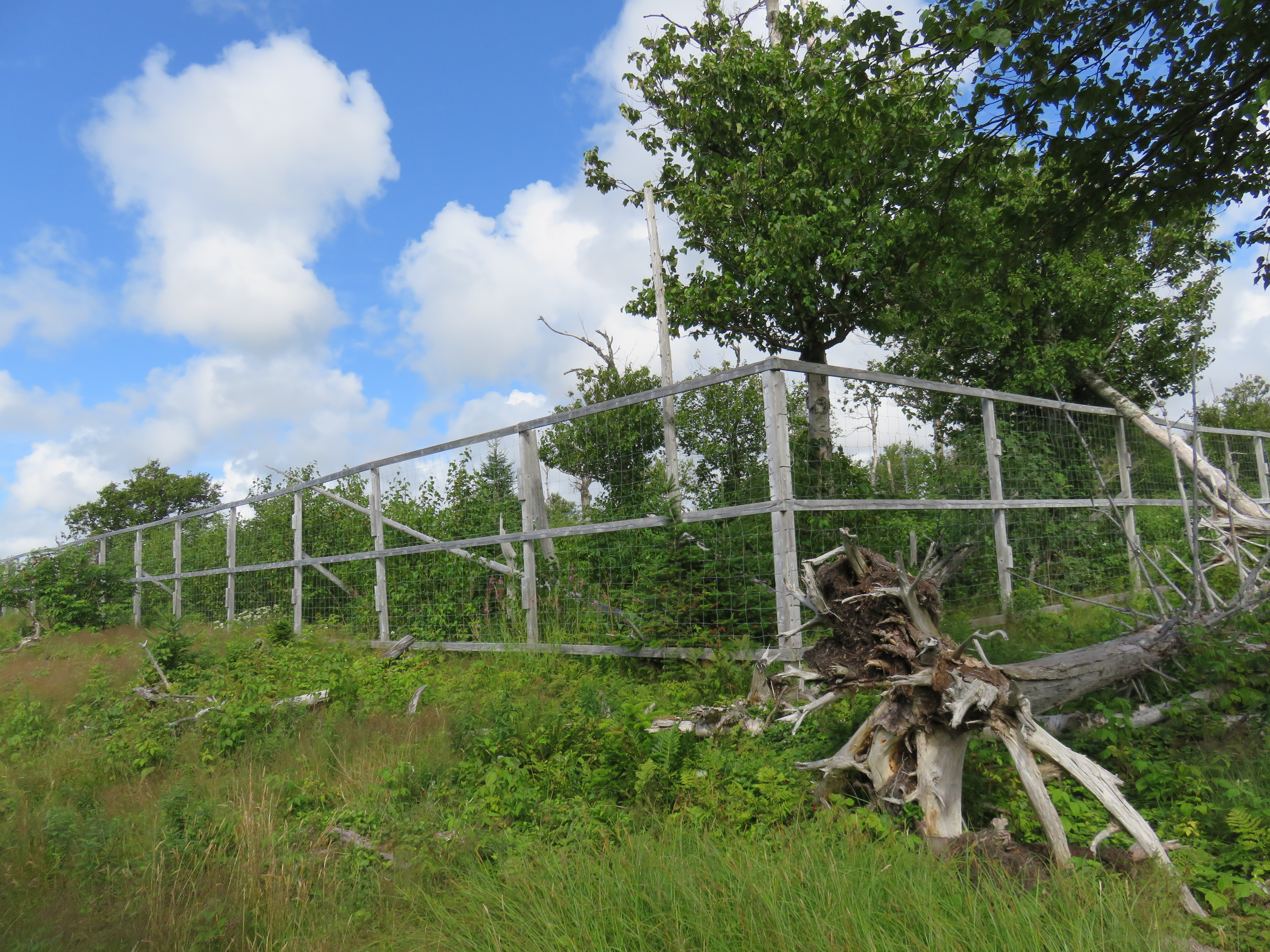
The billboard informed us that moose eat everything in sight, and the fenced-in area would be what the area we were hiking through would look like if there were no moose around. Sadly, we saw no moose eating its way through the forest that day. We did see many during our trip, but the most interesting one was standing precariously on nothing but rocks, where there was certainly nothing to eat, halfway up the mountain called Gros Morne.
We were warned, many times over, not to drive past dusk. Why? Moose. Or plural… more moose! We did see many while here and they do come out pre-dusk, grazing on the wild grasses by the side of the road. Contrary to belief and despite their large, cumbersome size, they can and do move in either direction extremely quickly and unpredictably. It won’t be pretty if you hit one, so heed the warnings as you drive by the billboards announcing the days since the last disastrous moose encounter.
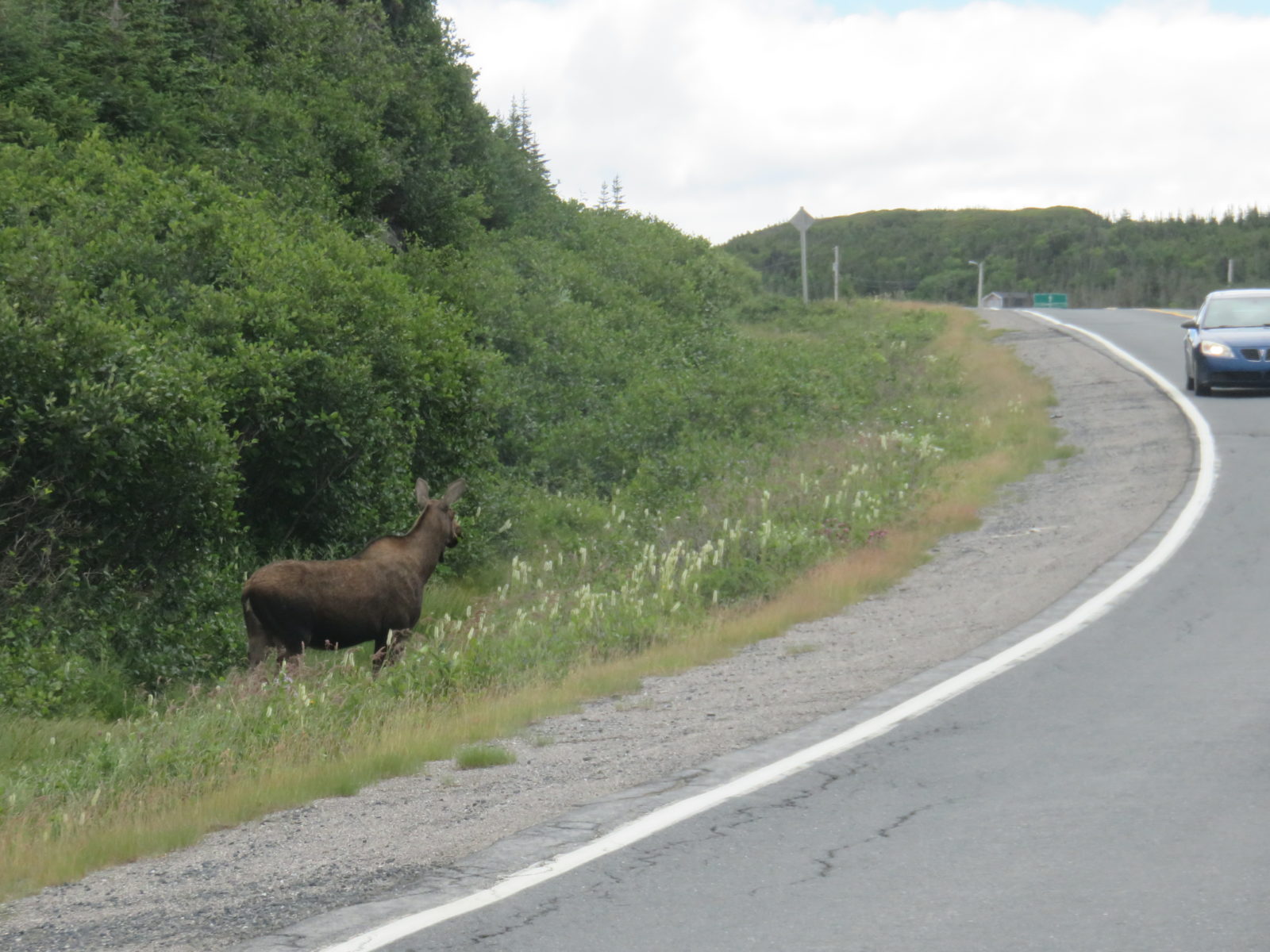
Gros Morne National Park is a wonderful area to explore. We reserved another boat ride with BonTours that took us deep into the fjord and left us gobsmacked as we stared at the majestic cliffs, each ridge and peak competing for the skies.
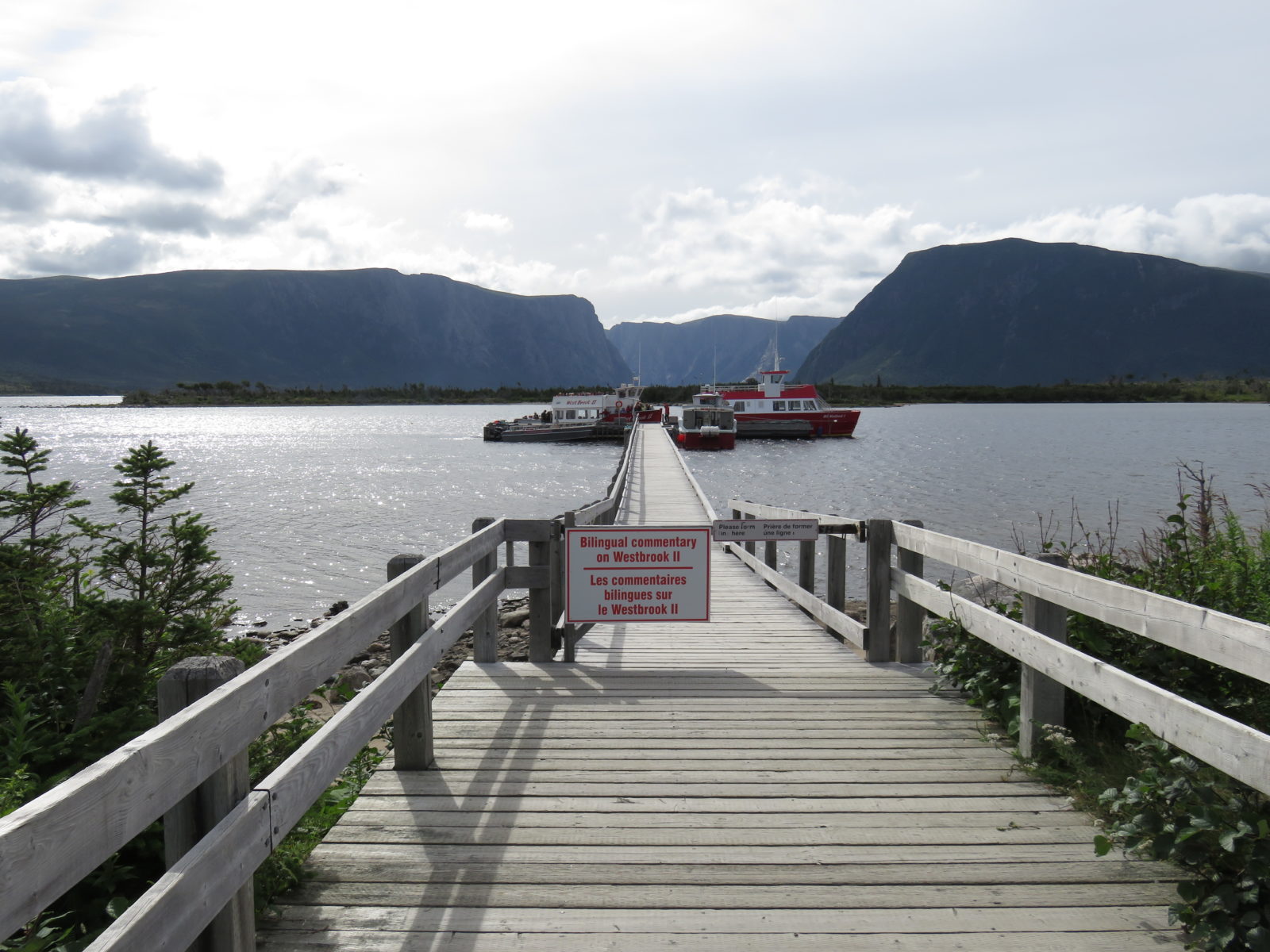
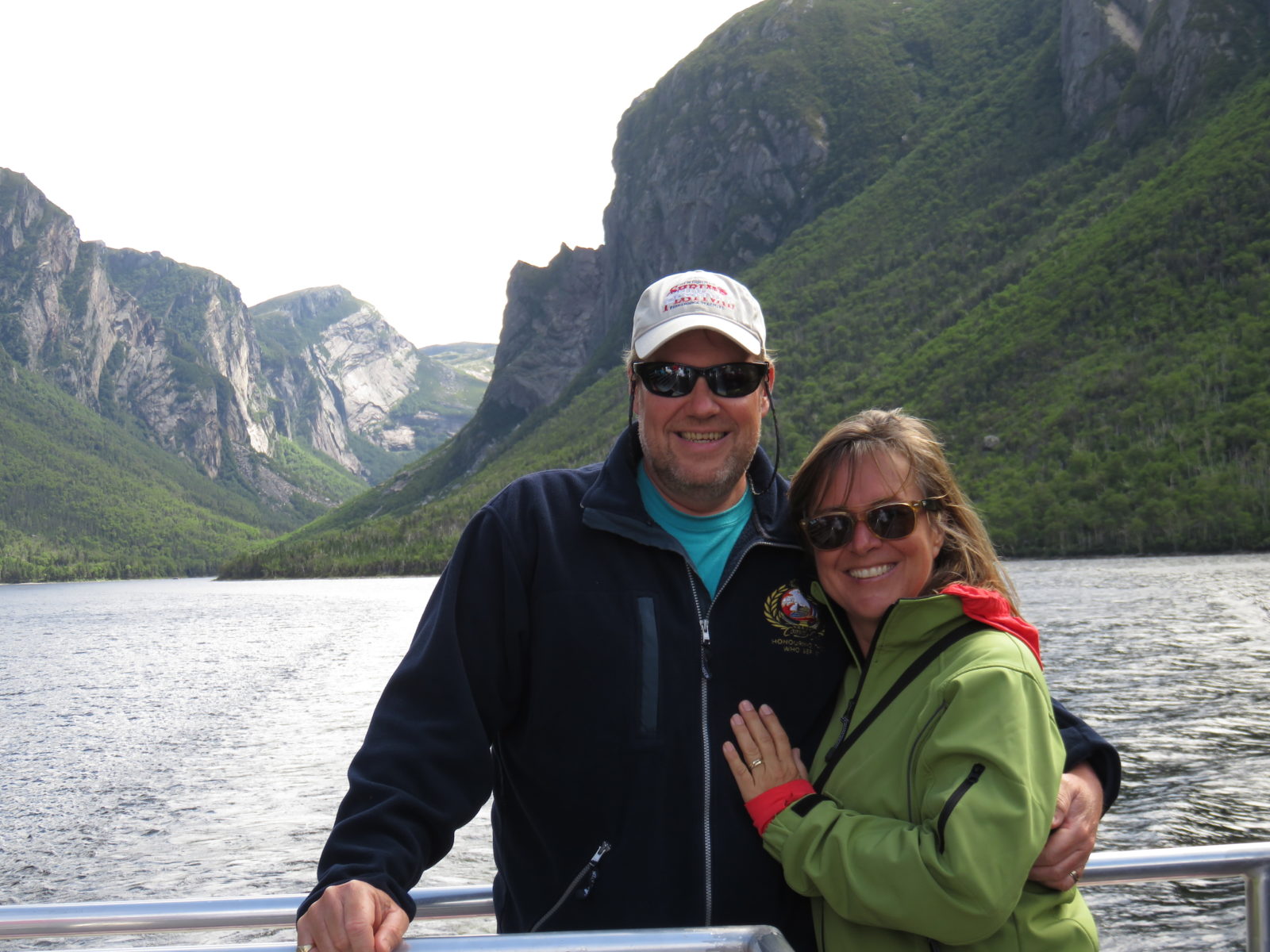
The next day, we hiked to the base of Gros Morne where notices warned that if we saw weather coming, we should not attempt the climb. The weather apps confirmed that the skies were blue and clear, so we continued on towards the mountain we were planning to climb.
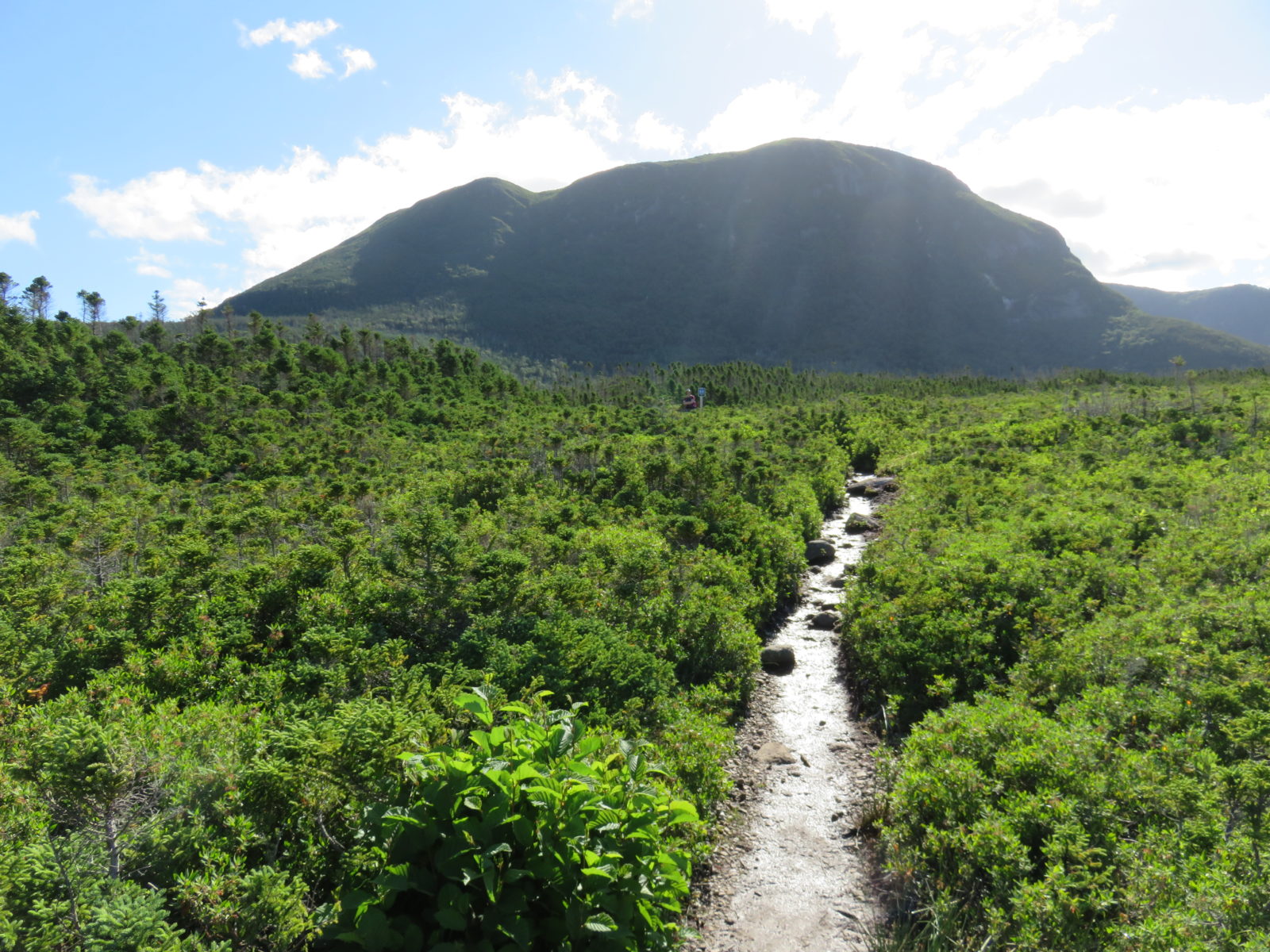
It’s a challenging one, and once you start the ascent, there’s no turning around and coming back down. We walked and climbed and sweated our way to the top, where we ate our lunch on the tundra-like landscape.
Exhausted, our tired ankles still faced having to get back down the stairs, across the rocky paths, to the base, and then back to the RV. This is quite the hike, so if you go, make sure you’re well-equipped and ready for it.
The People
In one community, we stopped to watch the whale spouts in the distance and chatted with the person next to us; an hour later, it felt like we were best friends. We only thought to introduces ourselves as we left, and he gave us a provincial pin and introduced himself as the mayor. One time, we stopped at a coffee shop along the wharf, which was not open, but she took us in anyway to offer up an afternoon tea and sweet. She was the owner of some rental units just across the street, and offered that we do our laundry in one of the units that was currently empty. We stayed overnight, plugged in and free of charge.
In fact, Newfoundland as a whole is rife with safe and visually stunning boondocking opportunities. No one will bother you, and if someone does saunter over? You can be sure they are there to welcome you to ‘the hood’, maybe even bringing sweets or an extra catch of fish.
Our time on The Rock was peaceful and incredible, each area we visited unique and visually stunning, leaving us with magnificent memories and a long story to tell. It’s a story complete with its own language, food and drinks, vistas, and people that make this place amazing and make it feel like you’ve come home.
Not to mention, you might even have a meet-up of the Leisure Traveling kind.
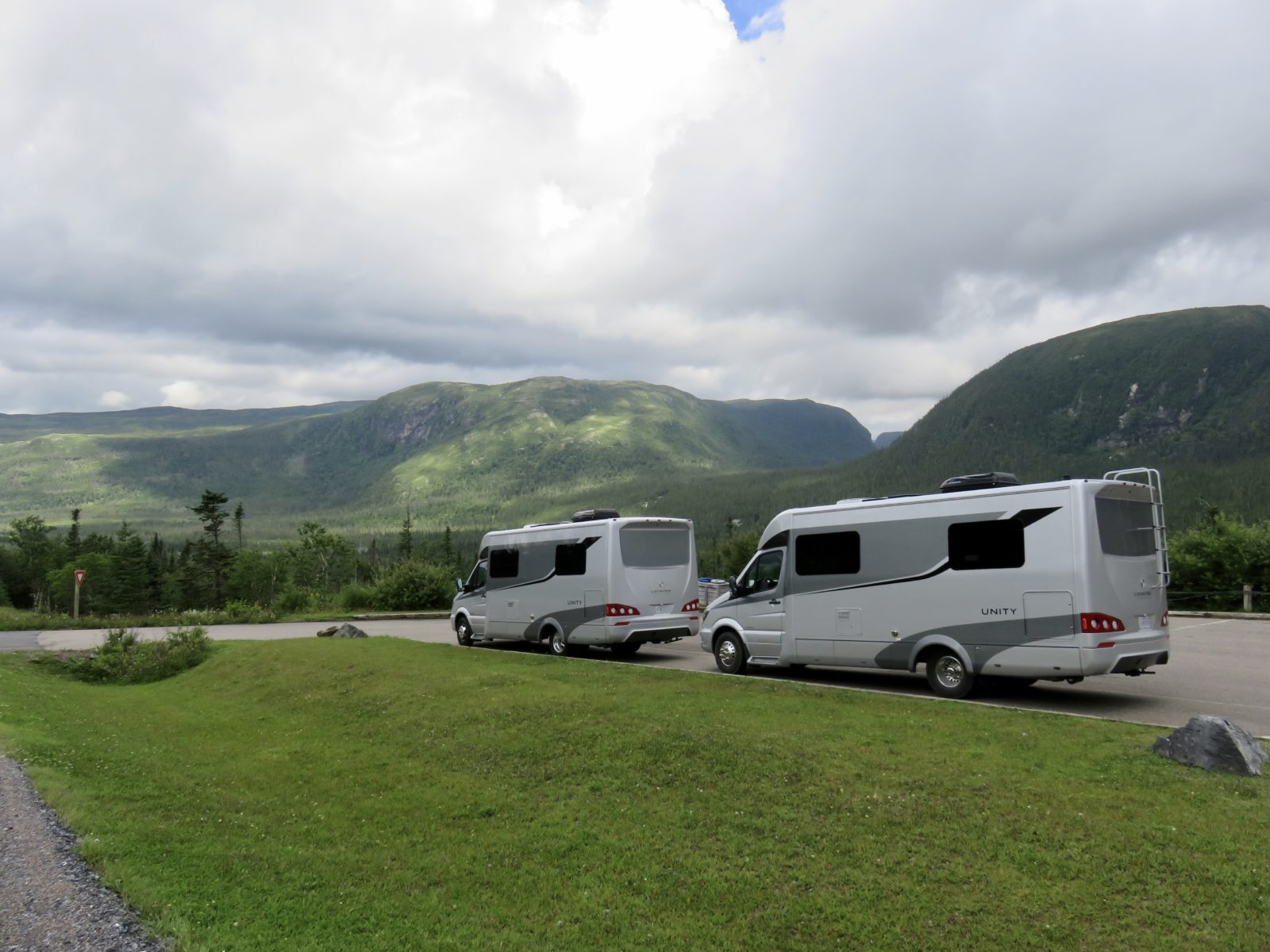
The Rock, aka Newfoundland, is one of Canada’s ten provinces that, if you have the opportunity, should definitely be placed on your bucket list of places for you to get up and go to.
With that, we leave you with one final, and perhaps our most favorite, expression:
“Long may your big jib draw.”


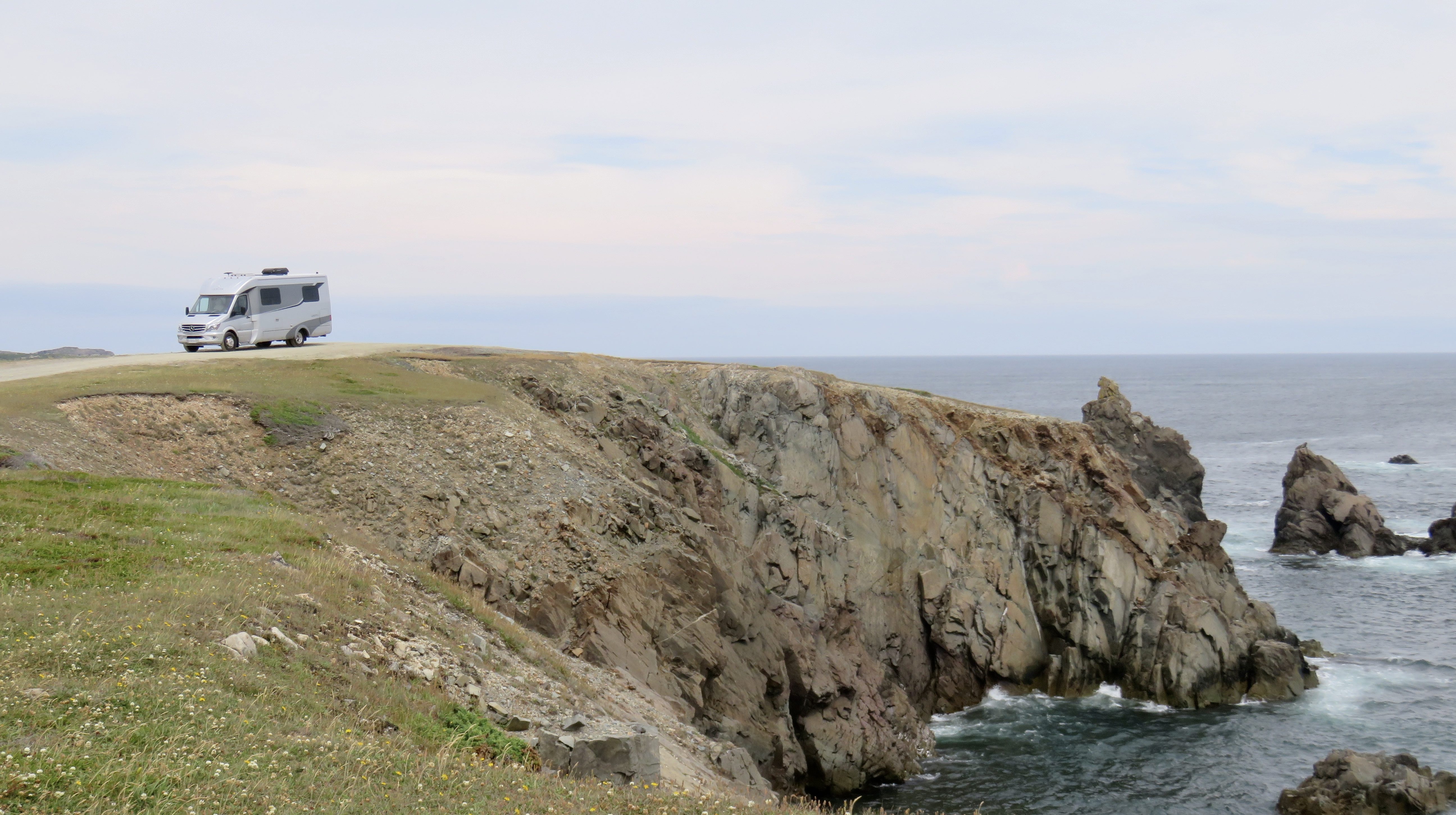
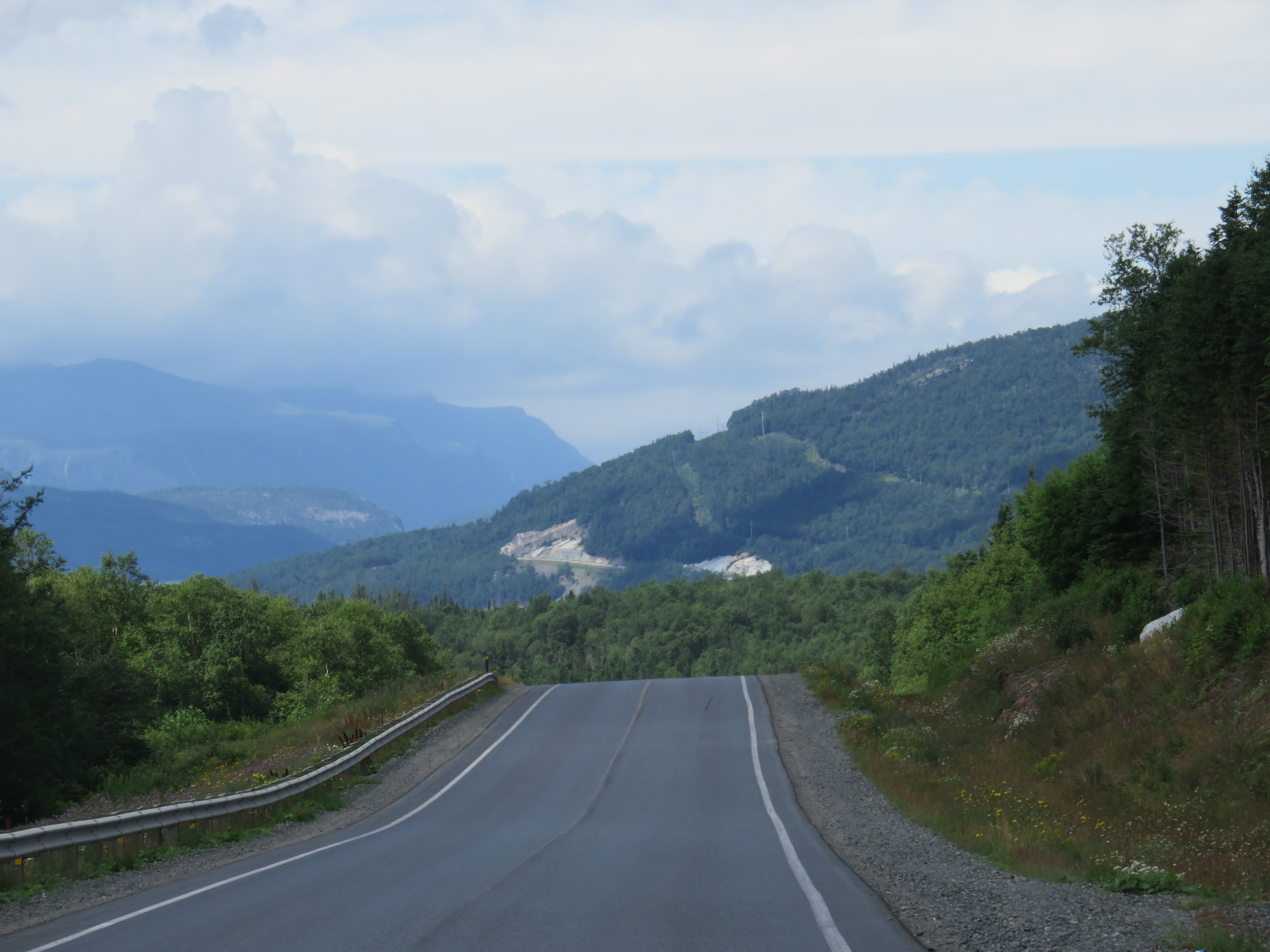
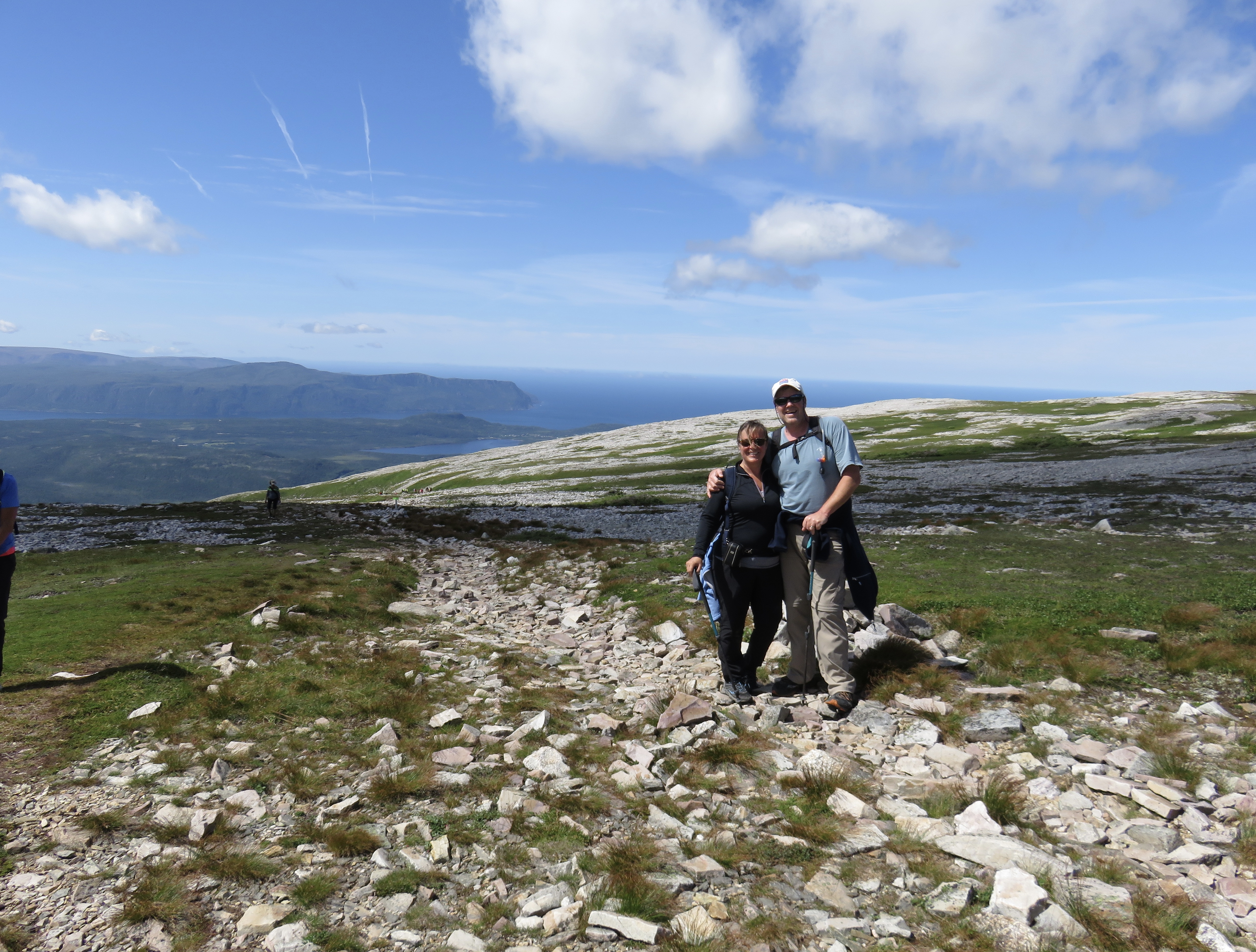


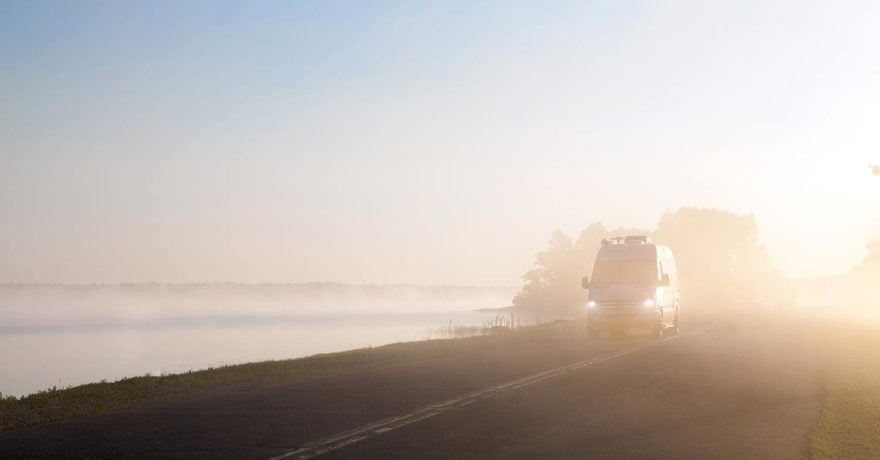
Comments